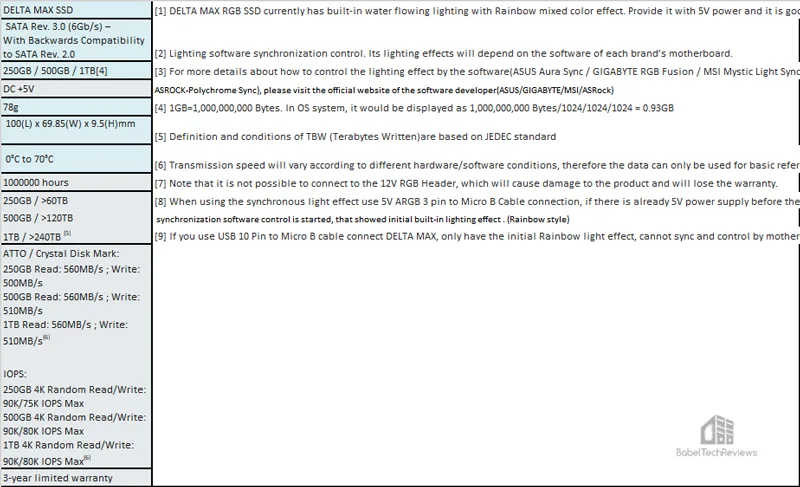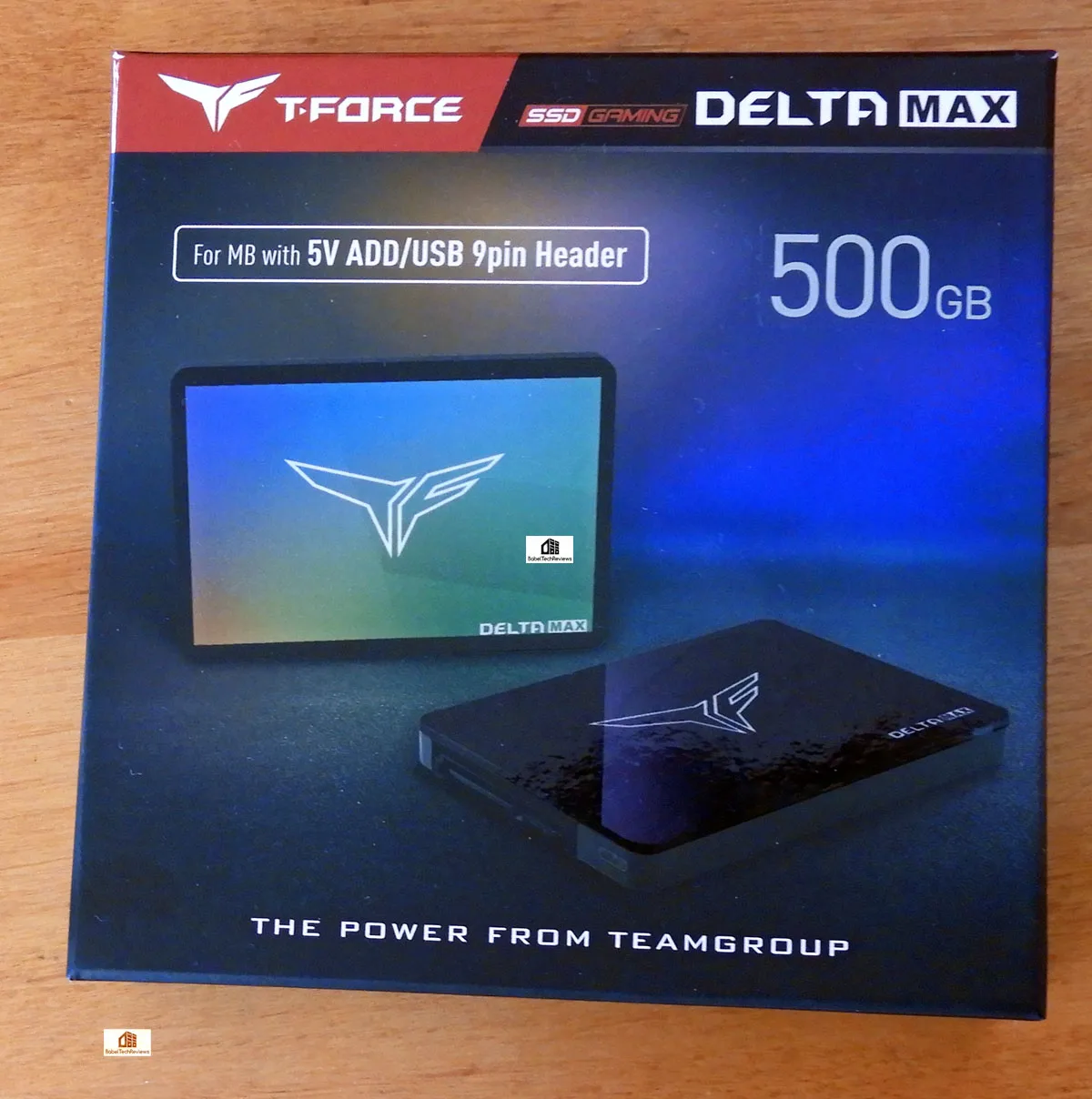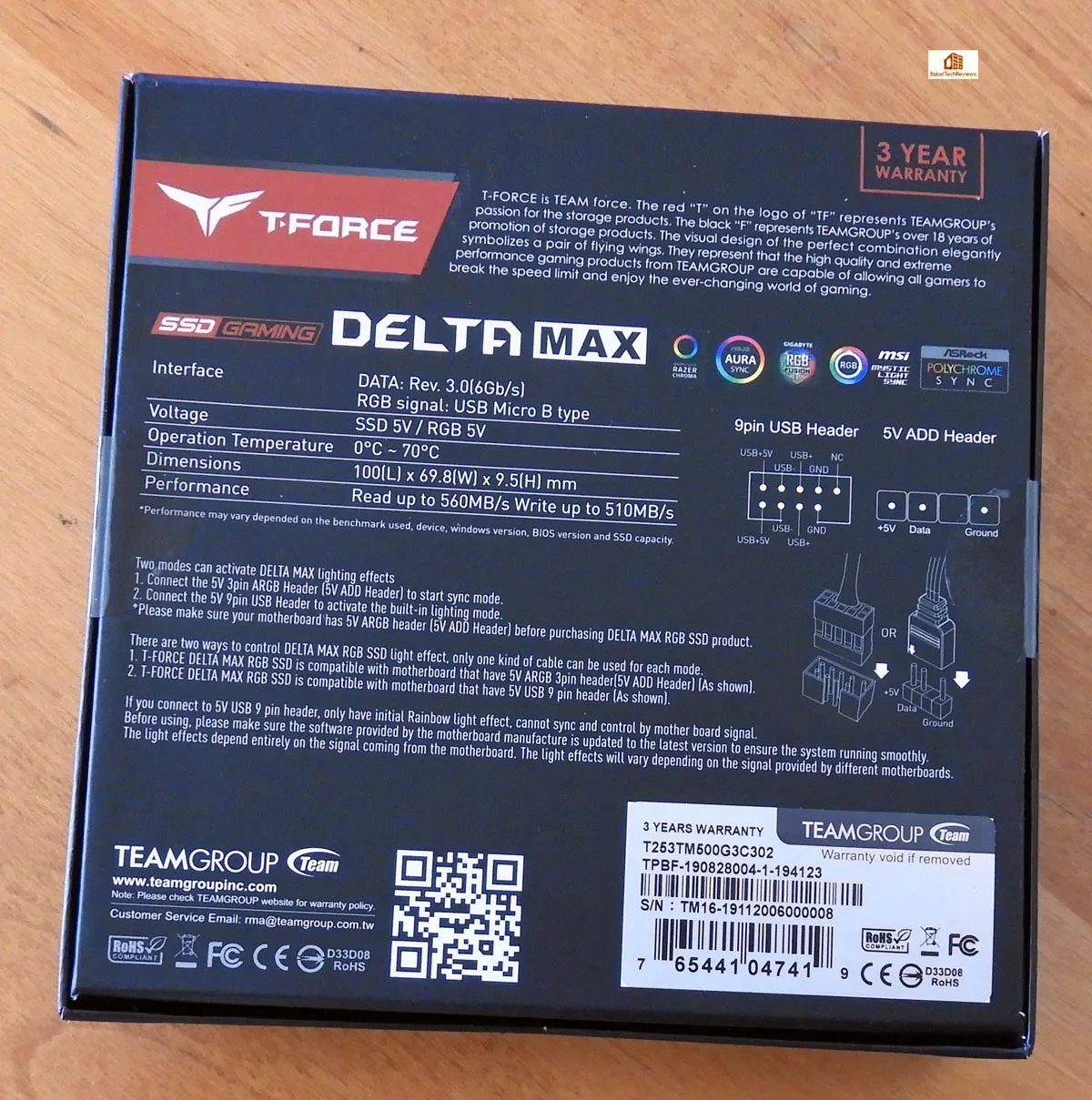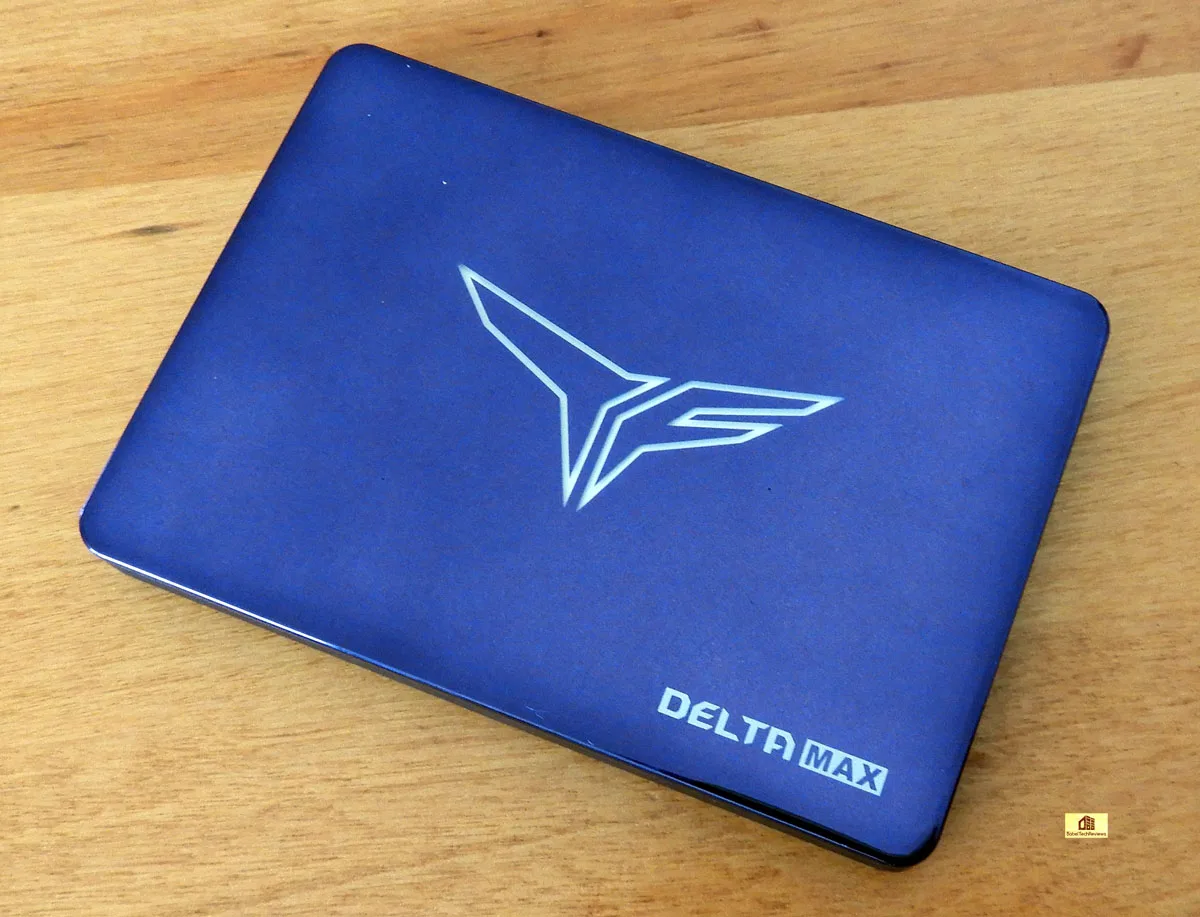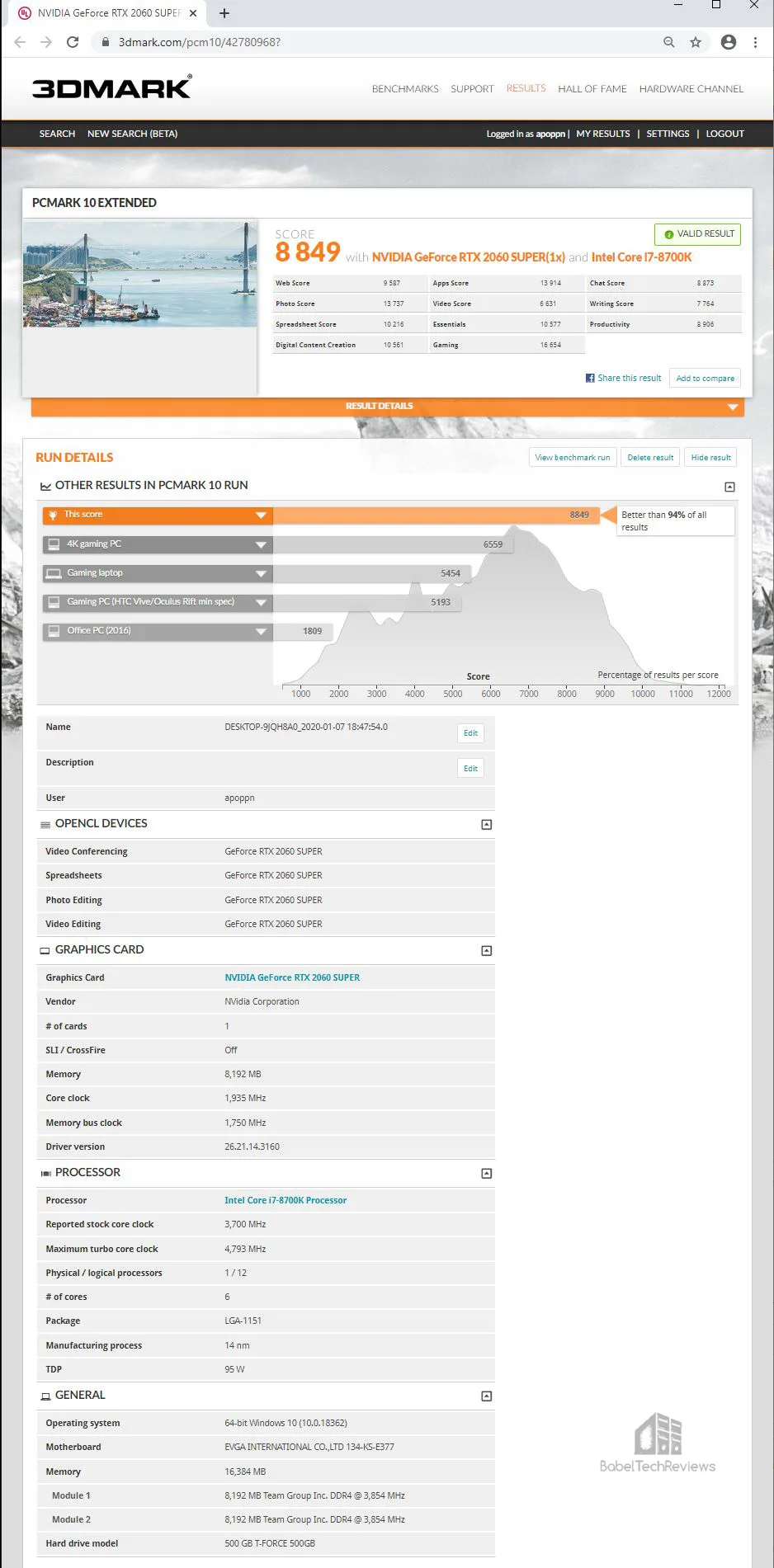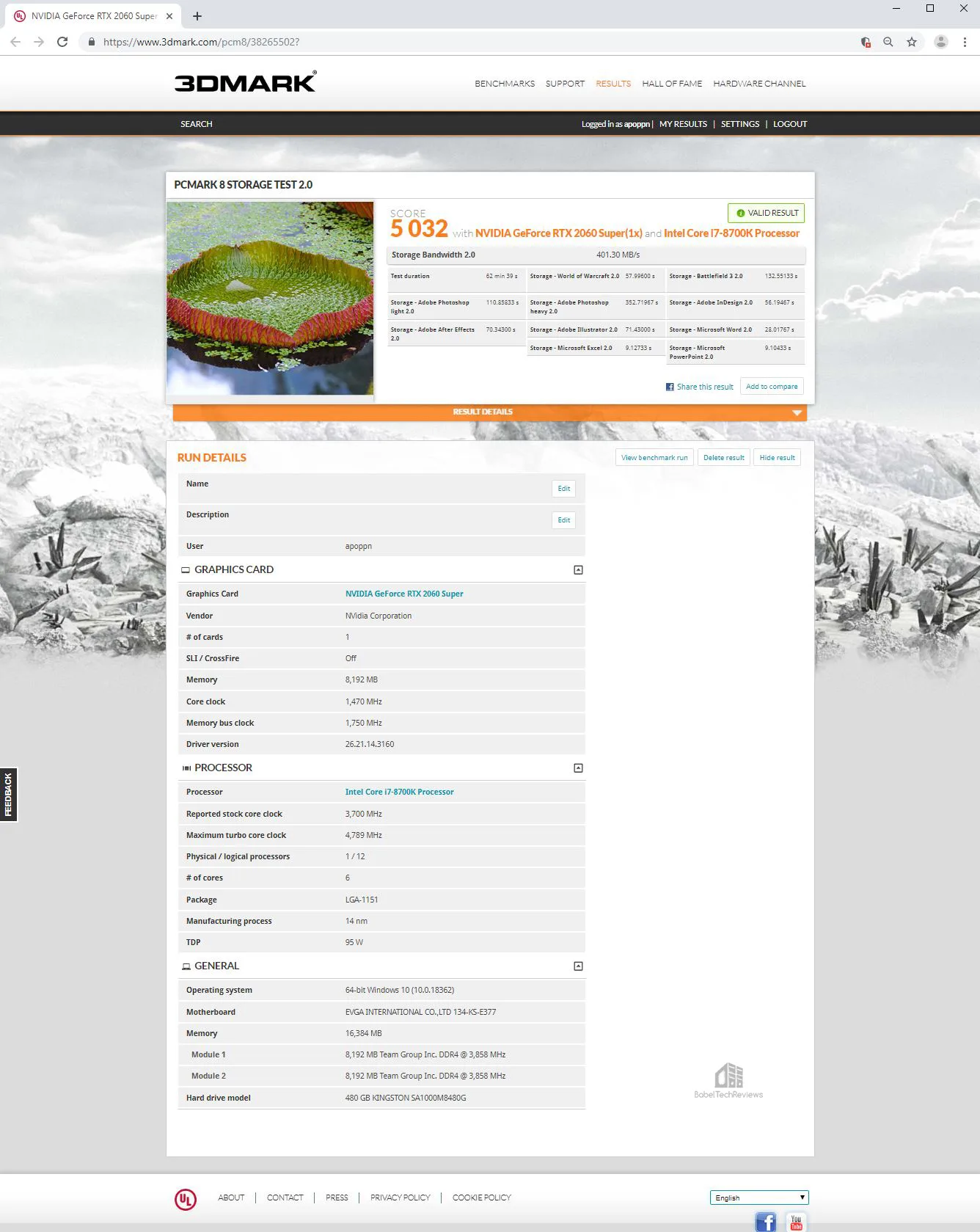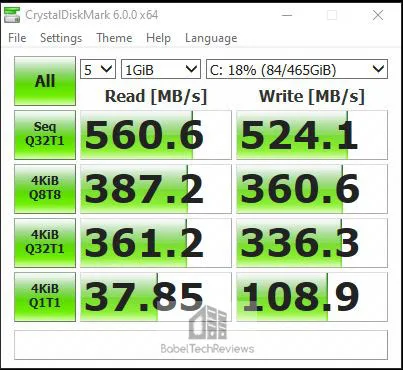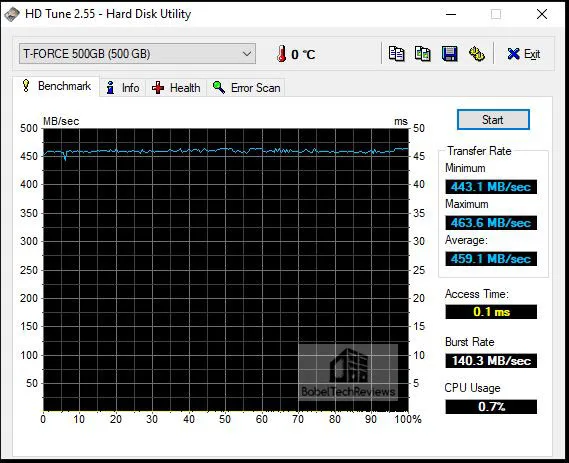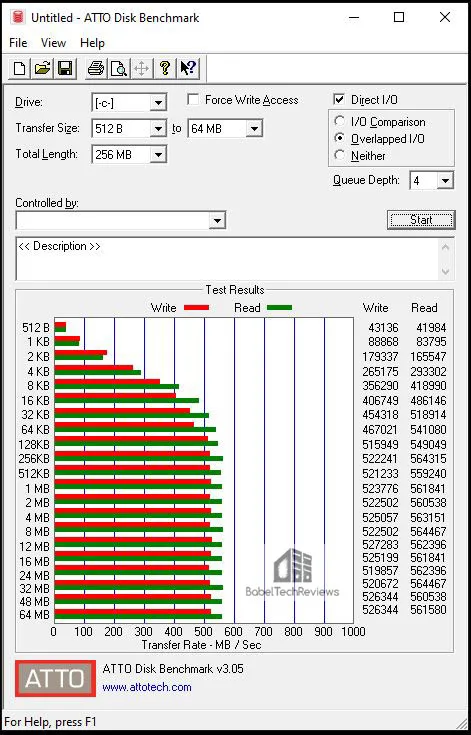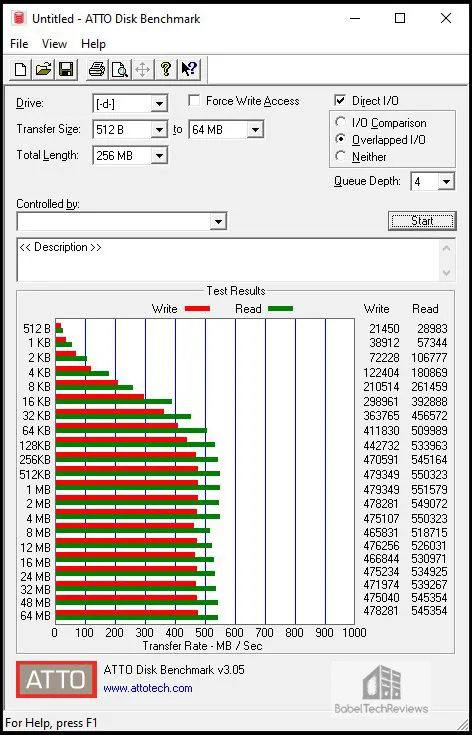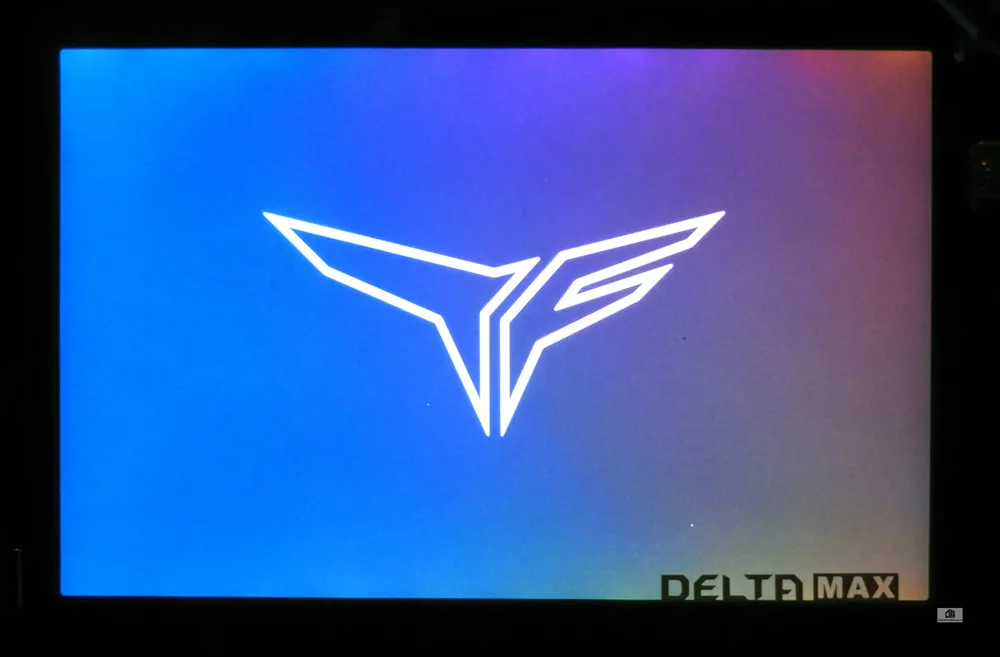The T-FORCE Delta Max 500GB SSD Review – SATA SSD maxed-out RGB
The T-FORCE DELTA MAX stands out from other SSDs (Solid State Drives) by using an addressable RGB module to create “water flowing” lighting in multiple colors across nearly its entire top surface – unlike any other SSD. With a mirrorlike black surface, the DELTA MAX SSD is designed to be the focus of a beautifully-lit PC, and the 500GB version we are reviewing commands a premium price of $99 on Amazon. We will focus on performance to see if it matches up to its eye-pleasing design.
We have five SSDs in BTR’s PC storing more than 3TB of mostly games, and yet we always need more storage. Using hard disk drives (HDD) or even Solid State Hard Drives (SSHD) are no longer even considered because of how slowly they load games and levels compared with SSDs. We are going to focus on the T-FORCE DELTA MAX 500GB RGB SSD to see if it is suitable for storing, loading, and launching games and how it compares with other storage solutions.
BTR uses two identical 480GB Team Group L5 LTE SSDs as boot drives – one for AMD and one for NVIDIA – together with a 1.92 TB SanDisk SSD and a 2 TB Micron 1100 SSD for our primary game storage. In addition, we also use a T-FORCE Vulcan SATA 500GB SSD for additional storage whereas previously we used a 2TB Seagate FireCuda Solid State Hard Drive (SSHD) for additional storage.
For this review, we are going to compare the performance of the above four drives together with a 240GB Team Group PD400 USB 3.0 SSD to the $99.99 500GB T-FORCE DELTA MAX SSD, but we can already see it is priced about the same as the faster NVMe SSDs. Since the 240GB version isn’t being sold in the USA, so we will use $54.99 for the 480GB PD400 at Amazon. The T-FORCE Vulcan 500GB SSD is sold at Amazon for $65.99; the Kingston A1000 480GB NVMe SSD is $103.57, the 480GB Team Group L5 SSD is $64.99, and a 2 TB FireCuda SSHD sells for $73.86 which is a 7200 rpm Seagate HDD coupled with 8 GB of flash drive.
BTR’s test setup uses Windows 10 64-bit, featuring an Intel Core i7-8700K overclocked to 4.8GHz for all cores as set in the EVGA Z370 FTW motherboard’s BIOS, and 16 GB of T-FORCE XTREEM DDR4 at 3866MHz. The settings and hardware are identical except for the four drives being tested, and the graphics are powered by a RTX 2060 SUPER Founders Edition (FE). BTR’s October review of the PD400 GB SSD was set up using the same drivers and conditions, so we will reuse those results for this evaluation.
We benchmark with all of our drives at less than 90% capacity, and in addition, all of the drives have been in use for months except for the DELTA MAX SSD which has been “dirtied” using IOmeter as well as being used for storage, so our testing tends to give more real world performance results.
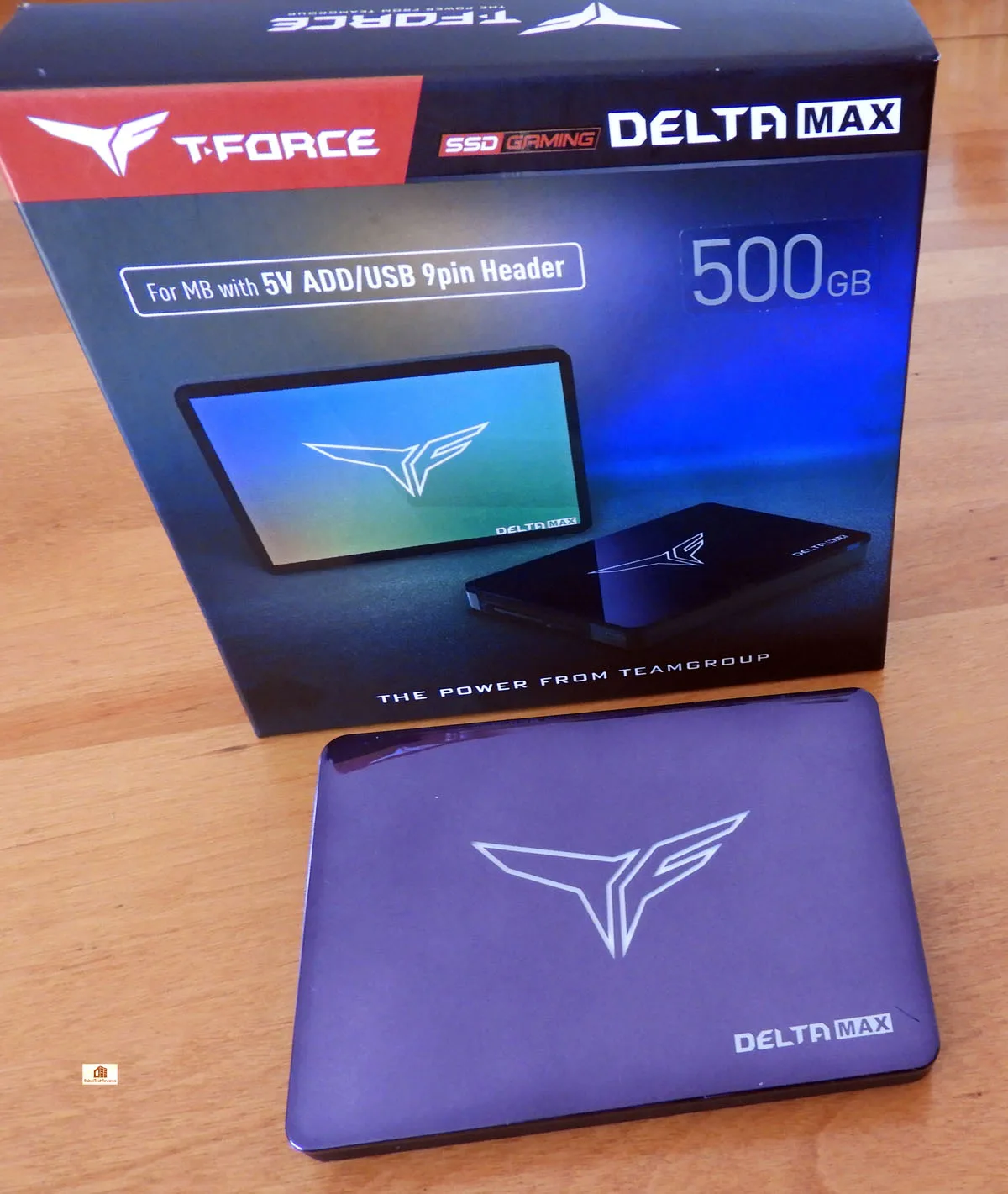
Here are the features and specifications of the Team Group PD400 portable SSD taken directly from the T-FORCE website.
FEATURES
- Simple design mirror can present a mirror like reflection effect
- Exclusive in luminous mode and motherboard synchronization function
- The world’s one and only independent dual control interface
- Using addressable RGB LED module
- Leading industry with largest proportion of luminous area
- 3-year product warranty with free technical support service.
Specifications
Details and specifications can be found on the Team Group website. Note that it is designed for desktop PCs as its addressable RGB module adds about 2.5mm to a typical 7mm SSD’s thickness making it unsuitable for many notebooks.
The single most important key highlight is that the DELTA MAX SSD is very good-looking when it is a dark mirror surface, but far more striking when the lights play across its large RGB display module. Using a 5V micro-USB or ADD cable, it can interface with many motherboards’ software to create the largest area of addressable LEDs for customization of its lighting sequences. Besides good-looking, it is fast, durable, uses little power for the light it outputs, and it is backed by Team Group’s 3-year warranty.
Next we unbox the T-FORCE DELTA MAX.
Unboxing
The Team Group DELTA MAX 500GB SATA SSD comes in a small box with a warning that it is “for MB with 5V ADD/USB 9pin Header“. You must have either option available or it will not light up at all. If you don’t plan to light it up, this SSD is more expensive for performance than non-RGB SSDs.
The other side of the box gives some specifications that show it is fast but not blazing fast for a SATA SSD.
It arrives well packaged.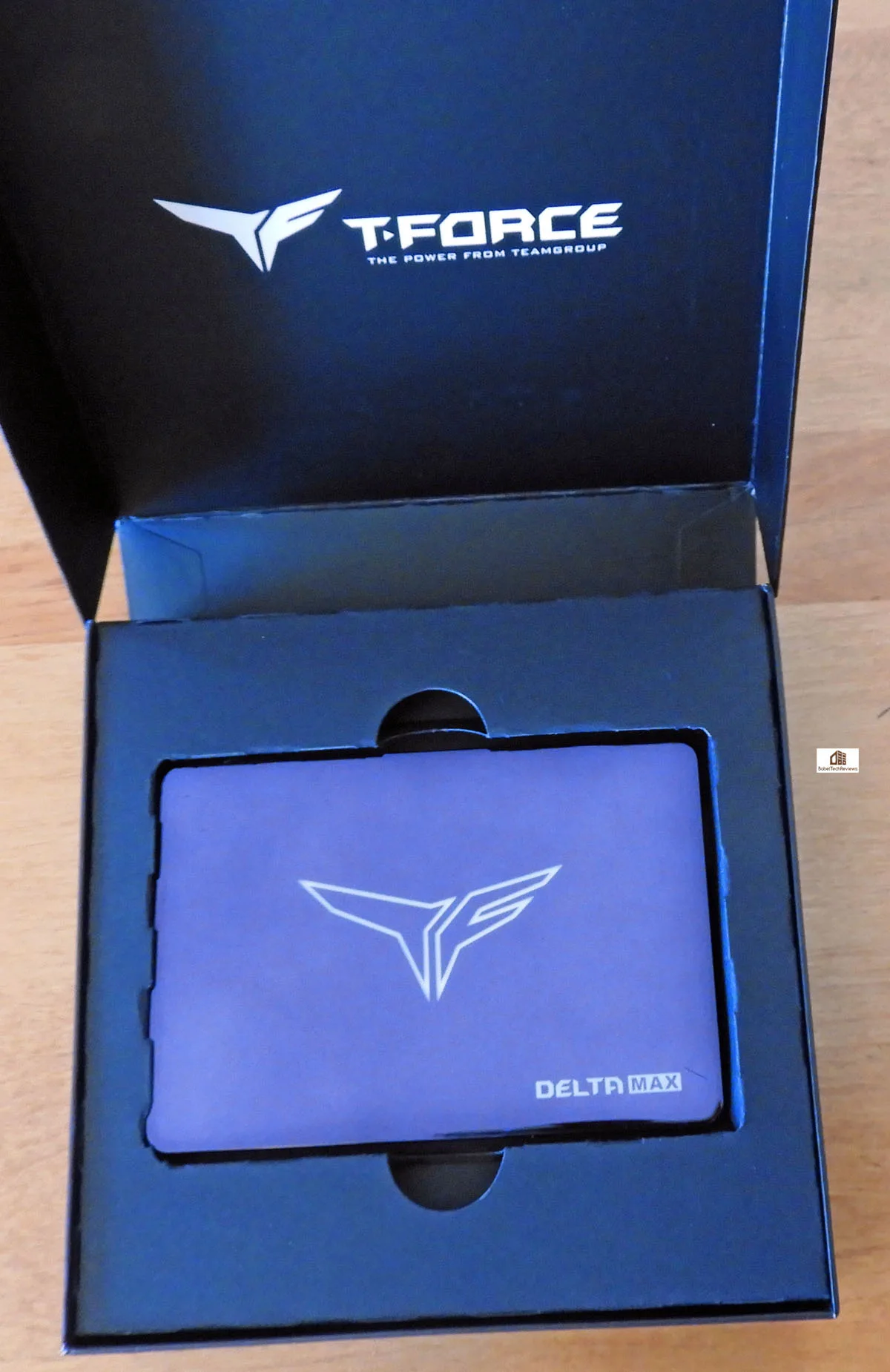 The first cable is a 5V ADD connection for the 5V ADD motherboard header connector and its other end uses a micro-USB connector for the DELTA MAX SSD. The second connects to a motherboard’s USB 9-pin header. We used our EVGA Z370 FTW’s 9-pin USB header to access the built-in lighting mode.
The first cable is a 5V ADD connection for the 5V ADD motherboard header connector and its other end uses a micro-USB connector for the DELTA MAX SSD. The second connects to a motherboard’s USB 9-pin header. We used our EVGA Z370 FTW’s 9-pin USB header to access the built-in lighting mode.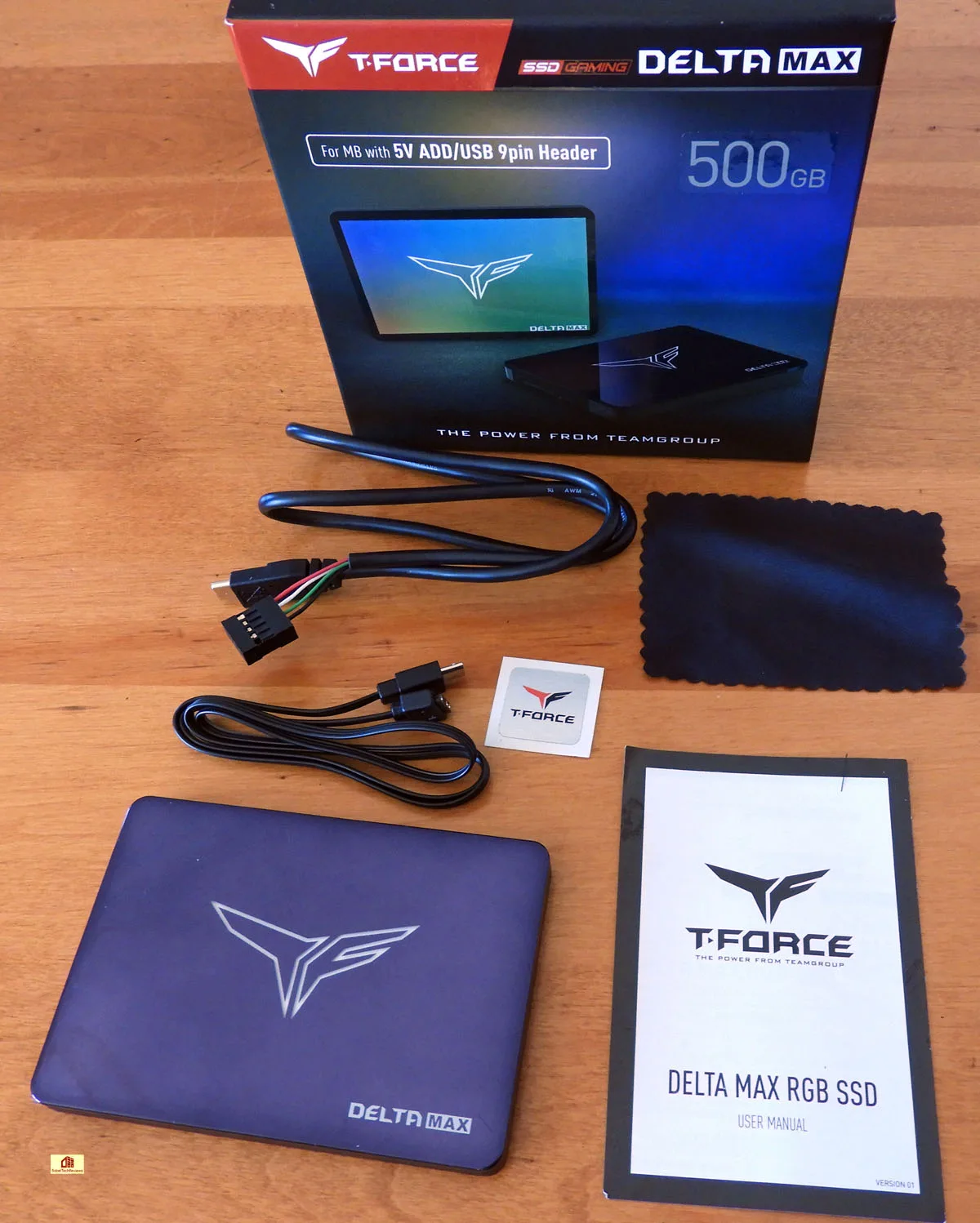
Here is a closer look at the DELTA MAX SSD which looks great with an all-black mirror surface with the stylized T-FORCE logo in white. There is no blue as the pictures indicate, and its mirror-like top surface makes it difficult to photograph well. The top surface is easy to smudge with fingerprints, and a small micro fiber cloth is included to polish it.
The obverse is typical metal but the DELTA MAX has an unusually solid and very heavy feel to it. Team Group gives a three year warranty.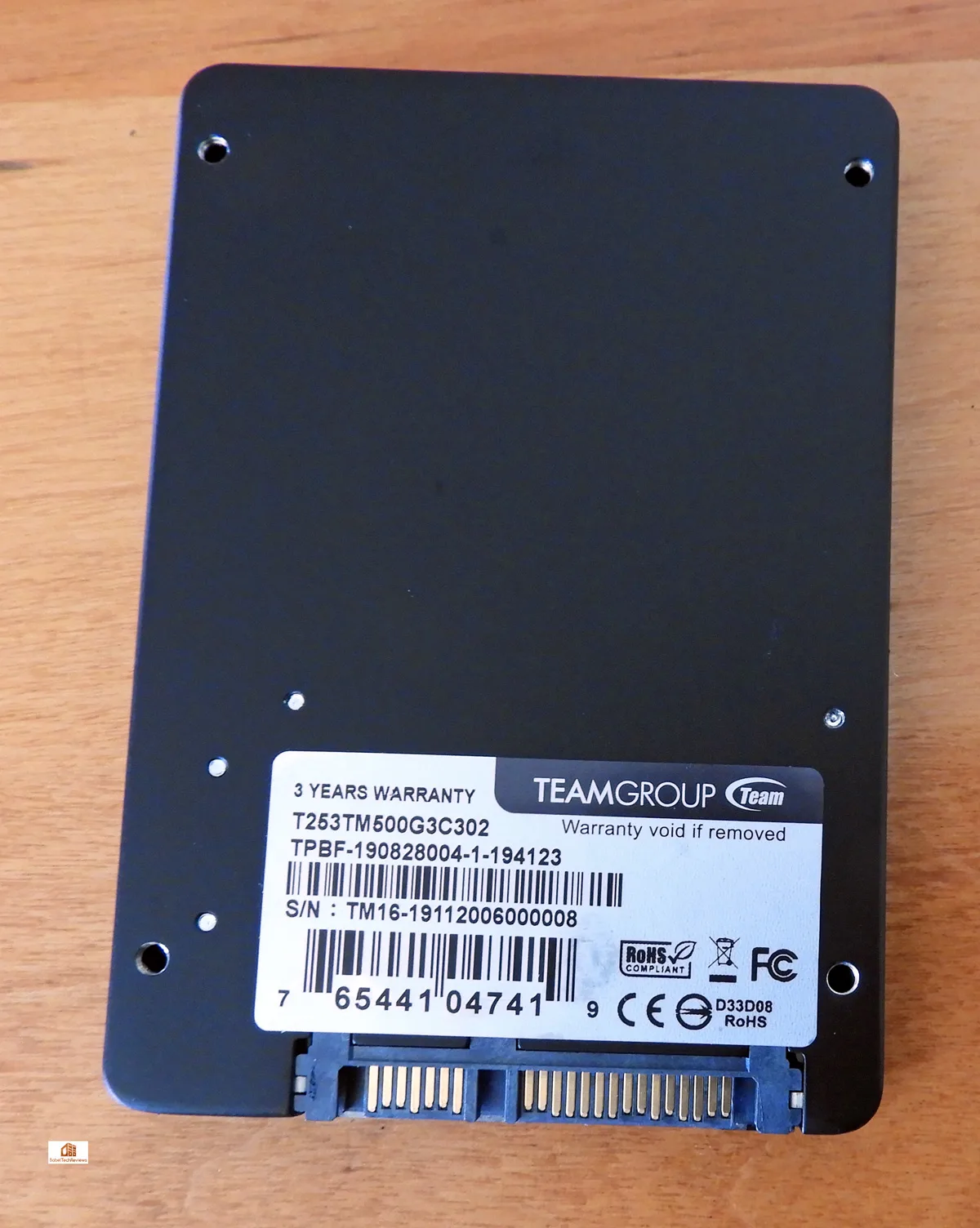
There is one additional micro USB connection beside the SATA and SATA power cables and it is used for the RGB lighting depending on how you connect it to your motherboard.
 After installing the SSD, the user may need to format it before using it. If you are planning to clone it, make sure both disks are GUID or convert one of them first. Make sure to plug it in to the motherboard and the extra USB Type C on the SSD and enjoy the light show.
After installing the SSD, the user may need to format it before using it. If you are planning to clone it, make sure both disks are GUID or convert one of them first. Make sure to plug it in to the motherboard and the extra USB Type C on the SSD and enjoy the light show.
[twenty20 img1=”16098″ img2=”16099″ offset=”0.5″]
Lets look at our test configuration next.
Test Configuration – Hardware
- Intel Core i7-8700K (HyperThreading and Turbo boost is locked on to 4.8 GHz for all six cores. Coffee Lake DX11 CPU graphics.
- EVGA Z370 FTW motherboard (Intel Z370 chipset, latest BIOS, PCIe 3.0/3.1 specification, CrossFire/SLI 8x+8x), supplied by EVGA
- T-FORCE XTREEM 16GB DDR4 (2x8GB, dual channel at 3866MHz), supplied by Team Group
- RTX 2060 SUPER Founders Edition 8GB, stock clocks, on loan from NVIDIA
- T-FORCE DELTA MAX 500GB SSD Supplied by Team Group
- Team Group PD400 External/Portable 240GB SSD, Supplied by Team Group
- T-FORCE Vulcan 500GB SSD Supplied by Team Group
- Kingston A1000 480 GB NVMe PCIe SSD, supplied by Kingston
- Team Group L5 LITE 3D 2.5″ 480 GB SSD
- 2TB Seagate 7200 rpm SSHD (Solid State Hard Drive)
- Edifier R1280T active desktop speakers
- Monoprice Crystal Pro 4K
Test Configuration – Software
- Nvidia’s GeForce 431.60 WHQL drivers were used. High Quality, prefer maximum performance, single display.
- VSync is off in the control panel.
- AA enabled as noted in games; all in-game settings are specified with 16xAF always applied.
- All results show loading time in seconds.
- Highest quality sound (stereo) used in all games.
- Windows 10 64-bit Home edition.
- Latest DirectX
- All games are patched to their latest versions at time of publication.
- MSI’s Afterburner, latest version.
- IOmeter
- HD Tach
- HD Tune
- AS SSD
- ATTO
- Crystal DiskMark
PC Game & Level Loading Suite
- World of Warcraft (PC Mark 8)
- Battlefield 3 (PC Mark 8)
Synthetic Benching Suites
- SiSoft Sandra 2020
- AIDA64
- PC Mark 8
Nvidia Control Panel settings:
We used MSI’s Afterburner to set the power and temp limits to their maximums.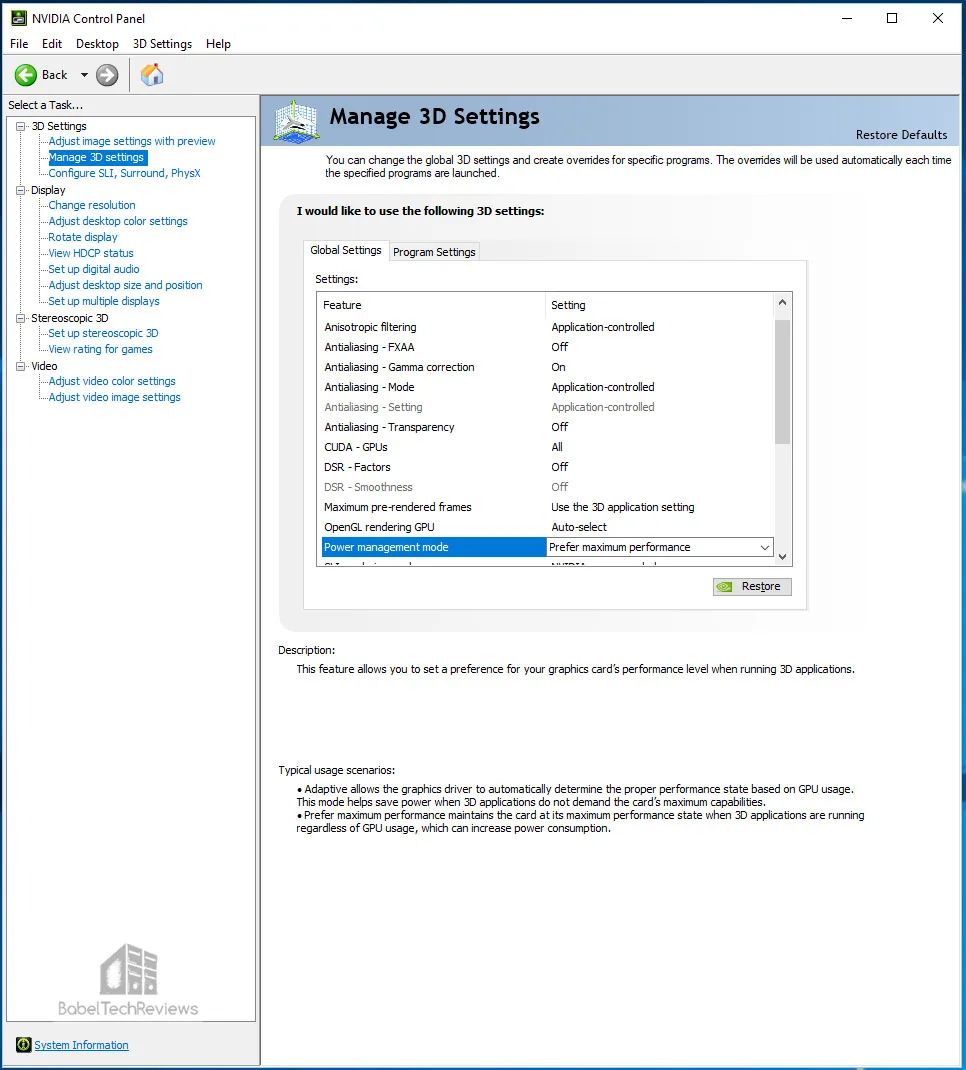
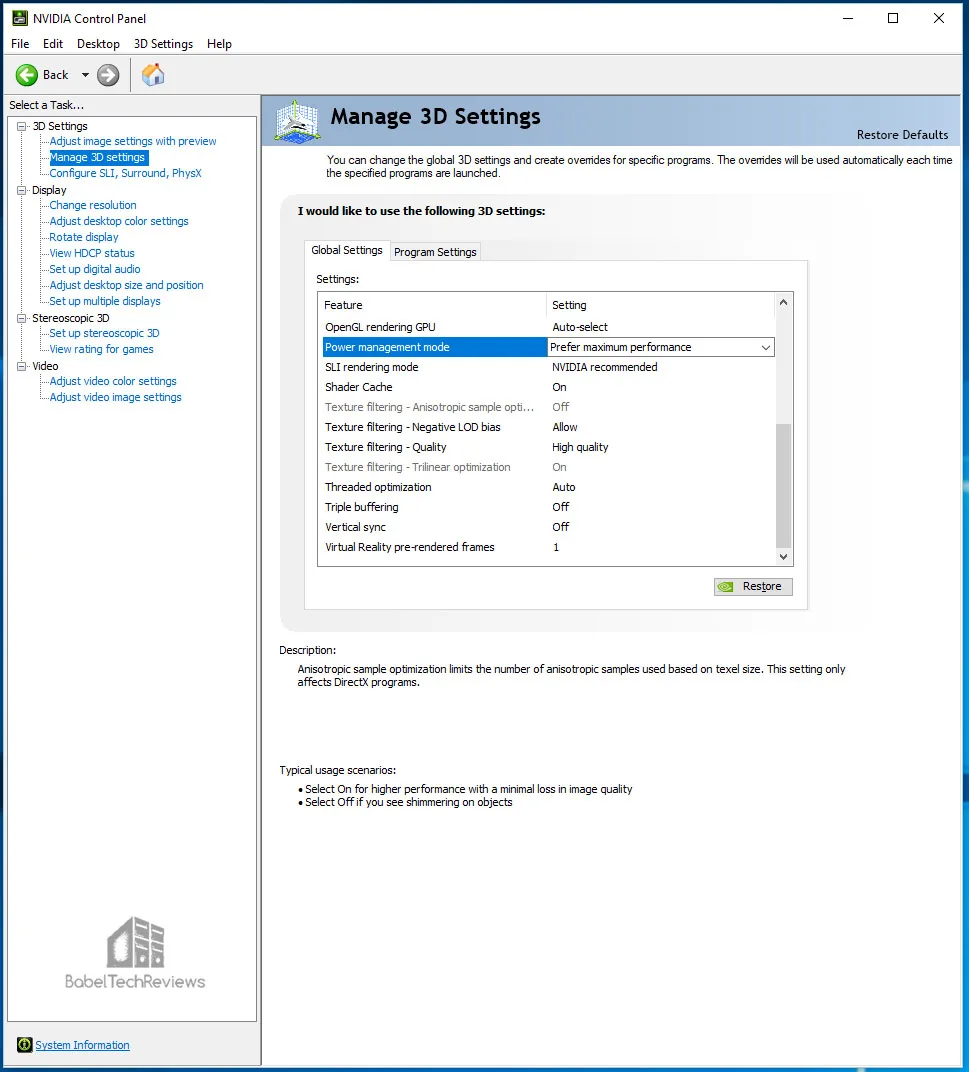
Let’s head to our benching results.
Benchmarking the T-FORCE DELTA MAX 500GB RGB SSD
Benchmarking SSDs is not an exact science as there is usually some variability between runs. However, by using multiple real world and synthetic tests, it may be possible to get a good idea of relative performance across all six of our tested drives.
First, we will will look at synthetic benchmark suites to highlight the differences between our drives and we shall start with PCMark 10.
PCMark10
UL (formerly Futuremark) is well-respected as a developer and publisher of PC benchmark applications for nearly two decades. Although PCMark benches are synthetic tests, they provide a good measure of system performance. PCMark 10 is UL’s seventh major update to the PCMark series. PCMark 10 was primarily developed for Windows 10 and it builds upon the PCMark 8 platform for a complete package of vendor-neutral and easy-to-use benchmarks for home or office environments.
Unfortunately, in comparison to PCMark 8, PCMark 10 is missing key elements including detailed storage testing, and it is not possible to test attached drives as with the earlier suite. We use the Extended settings.
The system with the T-FORCE Delta Max 500GB SSD scores 8849
Here are the online scores for the T-FORCE Delta Max 500GB SSD
The system with the T-FORCE Vulcan 500GB SSD scores 8880.
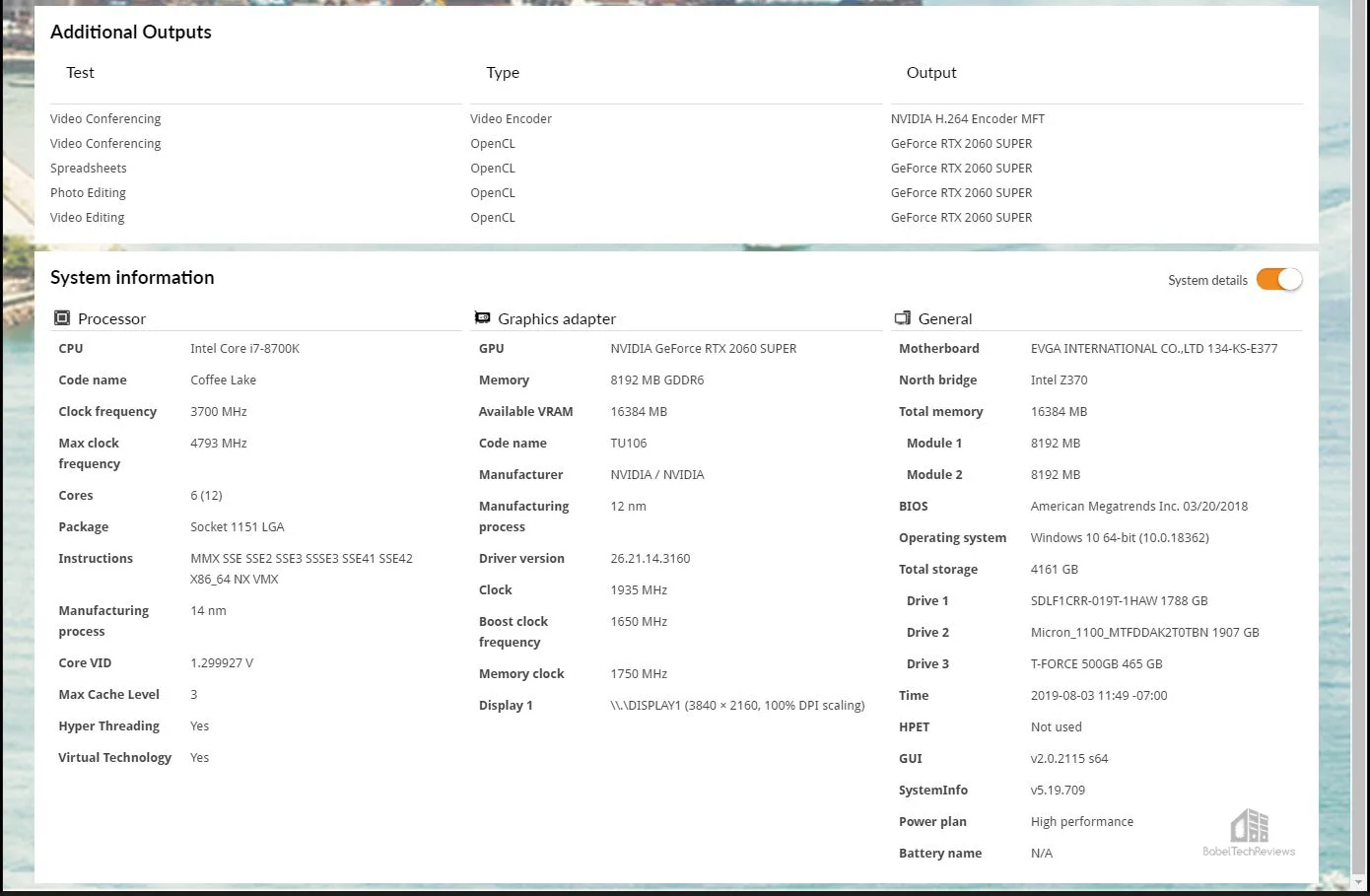
Here are the Vulcan 500GB SSD online results:
The same system with the Team Group 480 GB SSD scores 8831.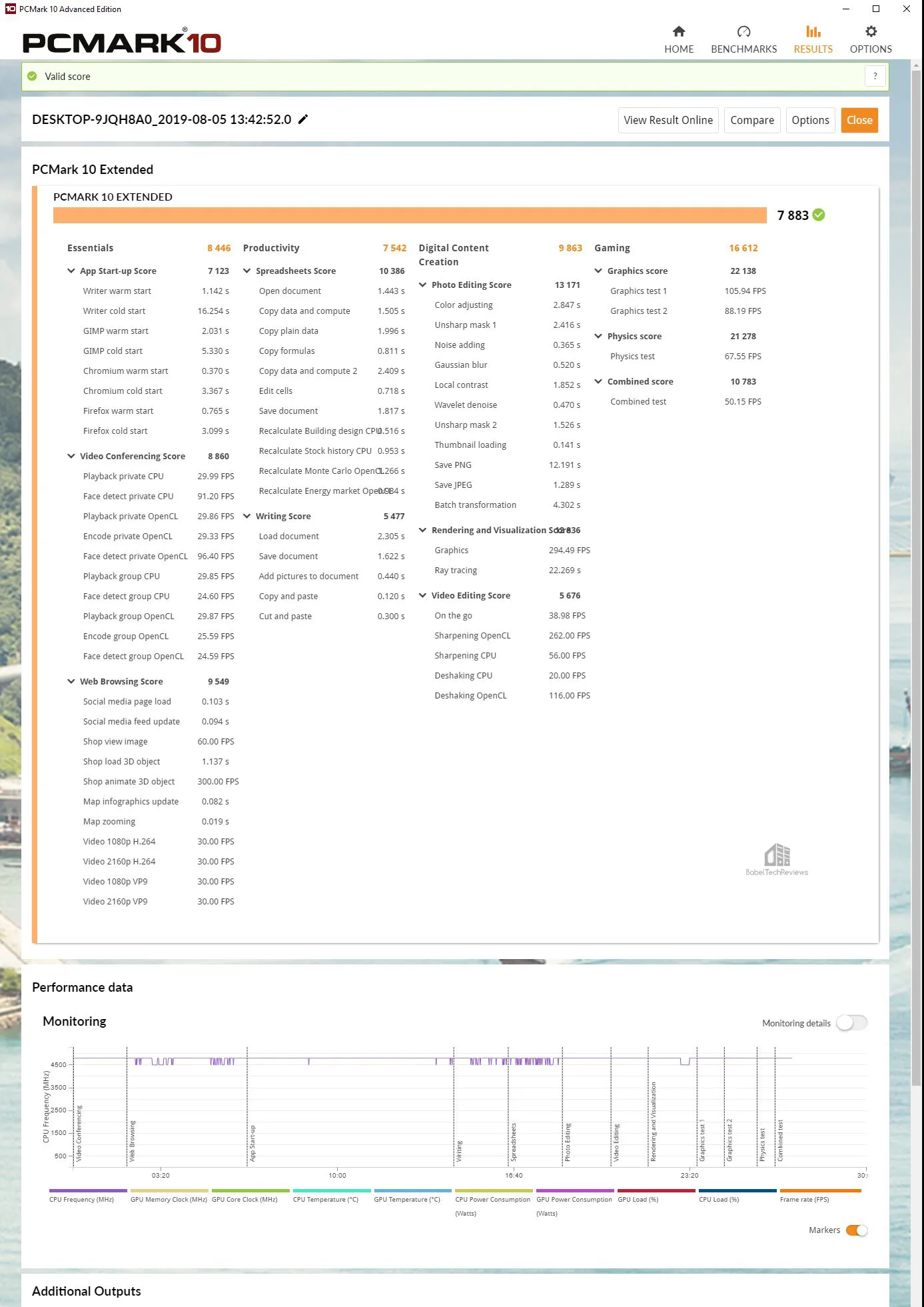
 Here is the same test with the Team Group 480GB SSD validated online.
Here is the same test with the Team Group 480GB SSD validated online.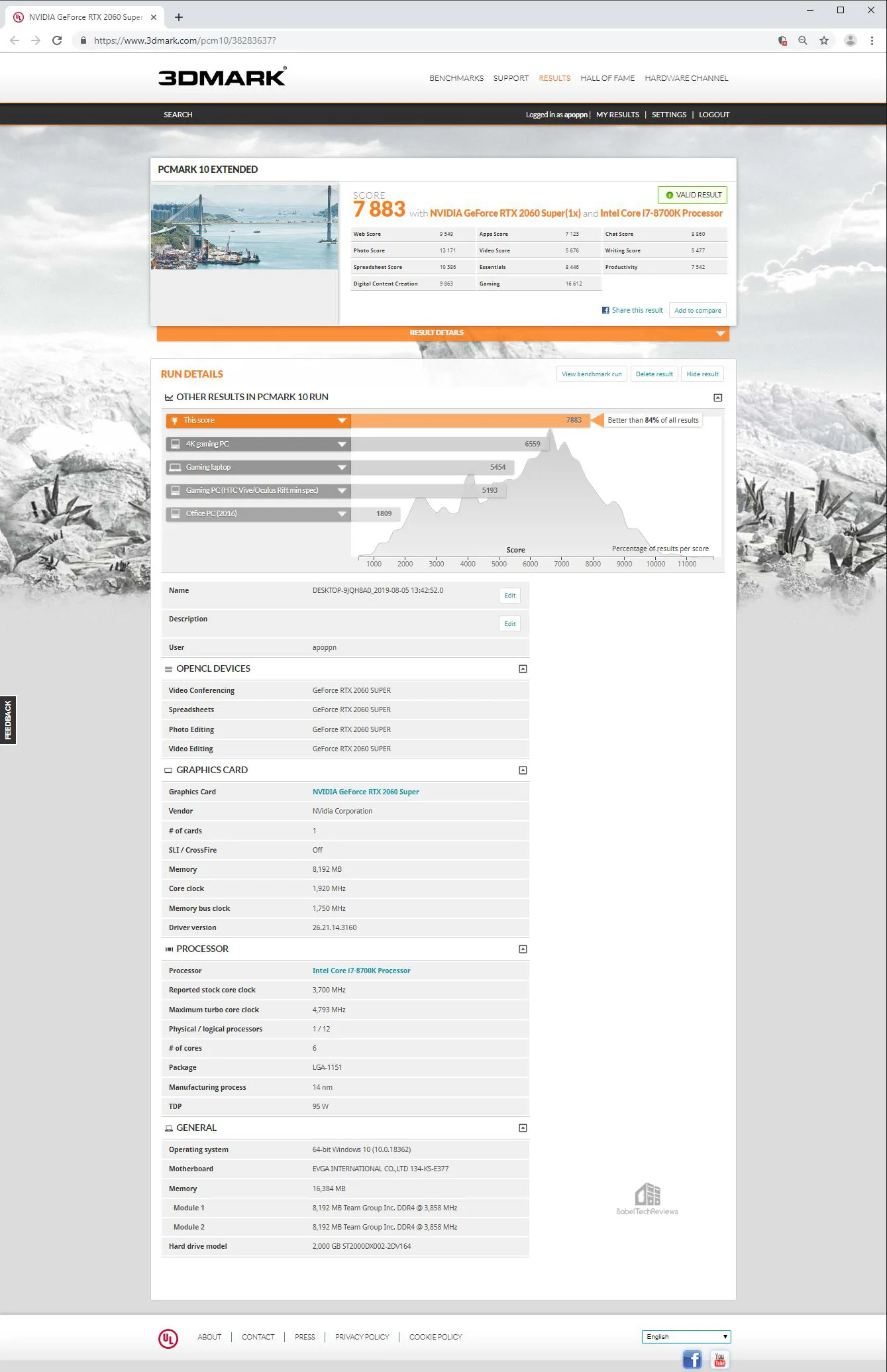
The same PC with the Kingston A1000 480 GB SSD scores 8863 which is ahead of the 480GB Team Group PC score, but it is a bit behind the T-FORCE Vulcan 500GB SSD results.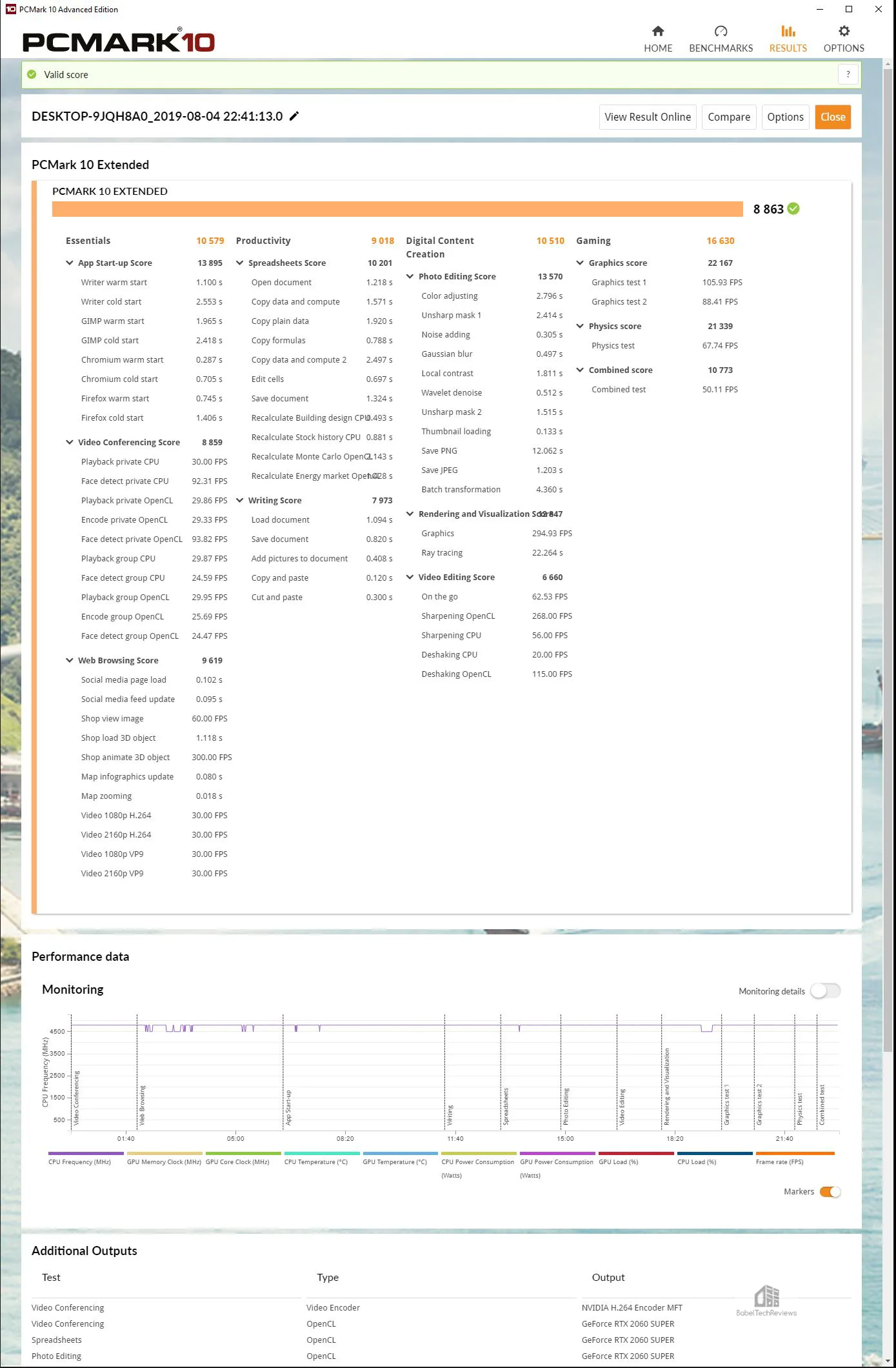
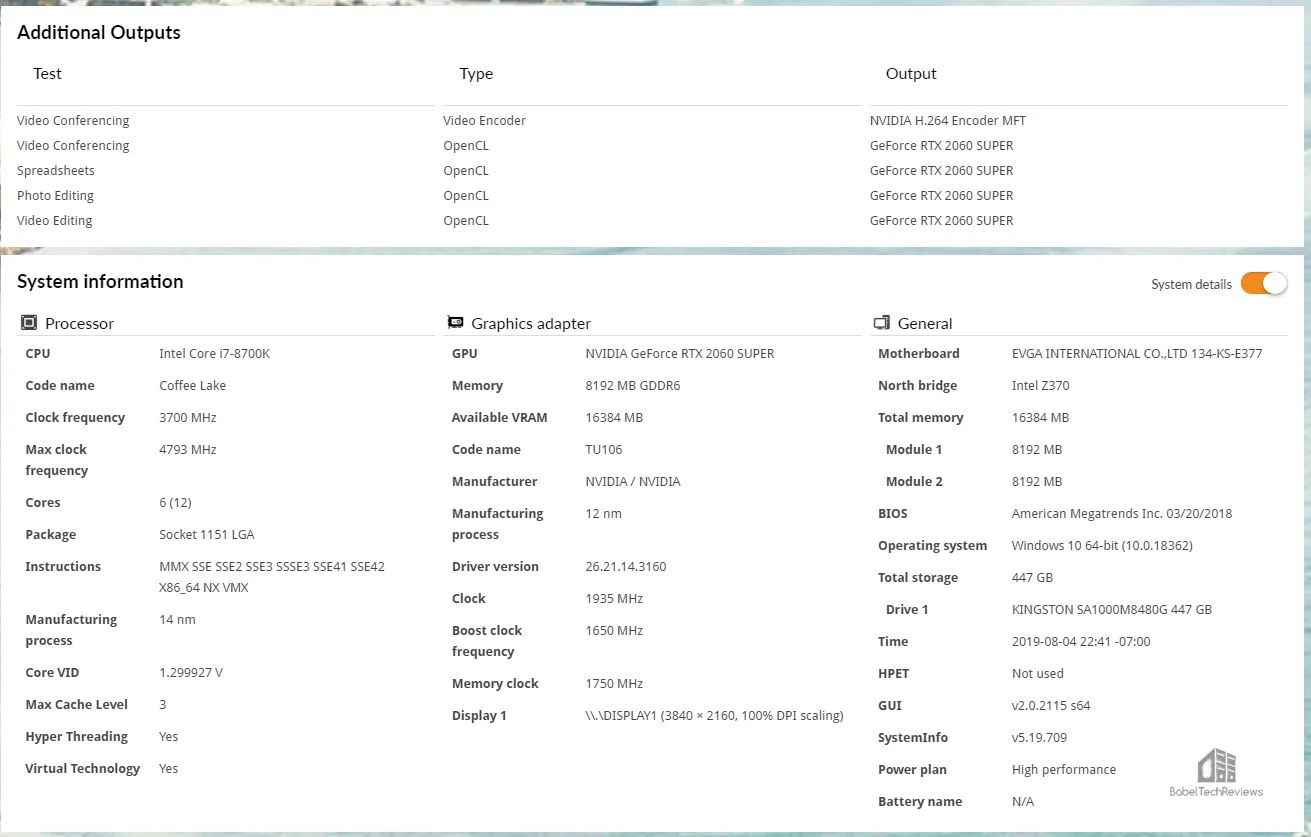 Here are the online results using the Kingston A1000:
Here are the online results using the Kingston A1000:
The FireCuda 2TB SSHD scores 7883.
 Here is the SSHD’s online score.
Here is the SSHD’s online score. Here is the summary.
Here is the summary.
The T-FORCE Vulcan 500GB SSD PC gets the highest score followed by the Kingston A-1000 and then the DELTA MAX with the Team Group L5 LTE SSD as the slowest tested SSD. There isn’t a lot of difference in SSD scores nor is it easy to see exactly where one scores higher by looking at the individual tests. PCMark 8 is a better storage test next.
PCMARK 8
PCMark 8 has an excellent storage test which actually uses real world timed benchmarks that include loading World of Warcraft and Battlefield 3 as well as timing how long it takes to load popular Adobe and Microsoft apps.
The T-FORCE Delta Max 500GB SSD scores 4962 with a total Storage 2.0 Bandwidth of 252.94 MB/s. And for gamers, it took 58.4 seconds to load World of Warcraft and 133.7 seconds for Battlefield 3 to load.
Here are the online Delta MAX results:
The T-FORCE Vulcan 500GB SSD scores 4985 with a total Storage 2.0 Bandwidth of 295.60 MB/s. And most importantly for a gamer, it took 58.2 seconds to load World of Warcraft and 133.2 seconds for Battlefield 3 to load.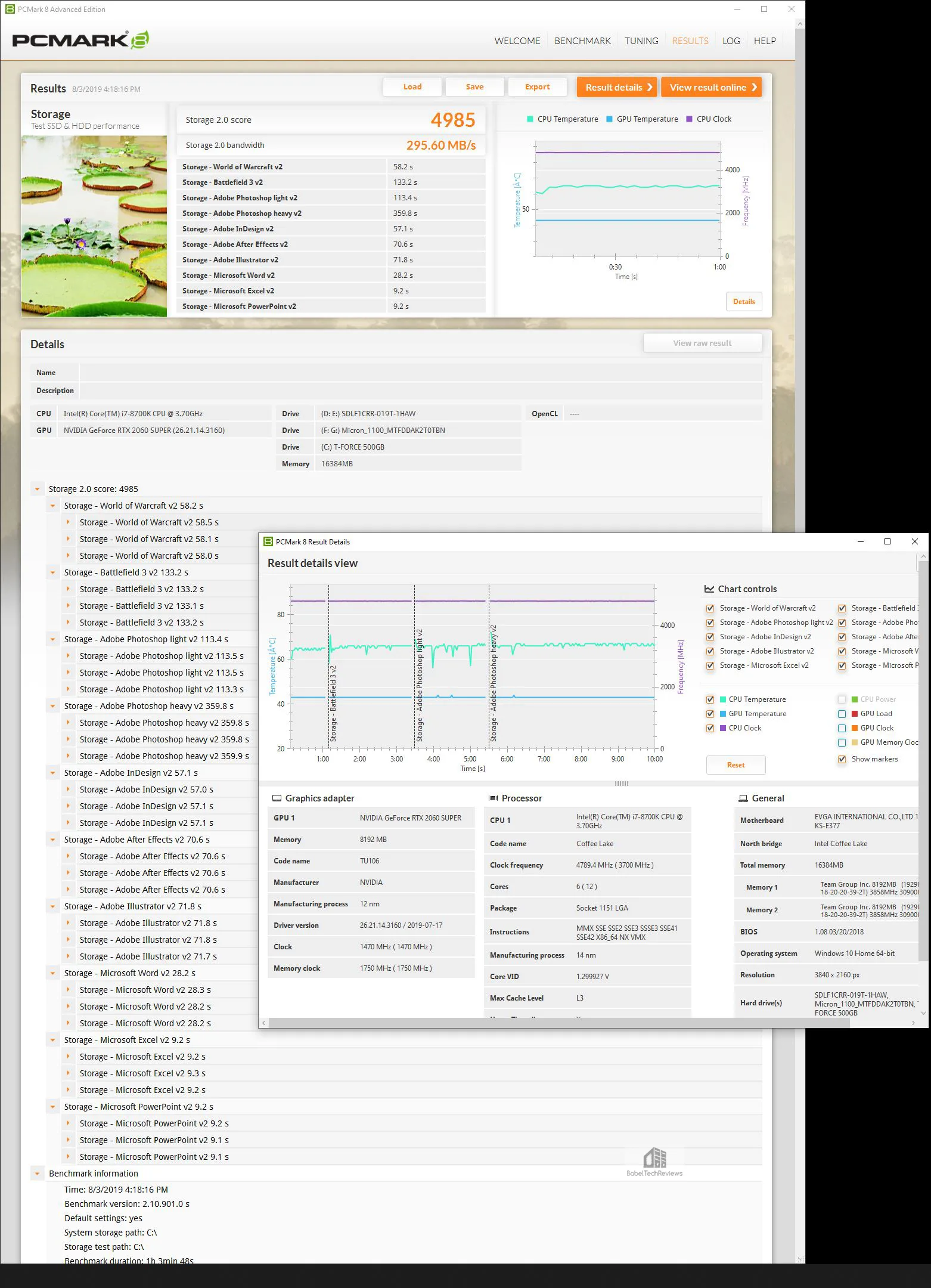
Here are the online Vulcan 500GB SSD results: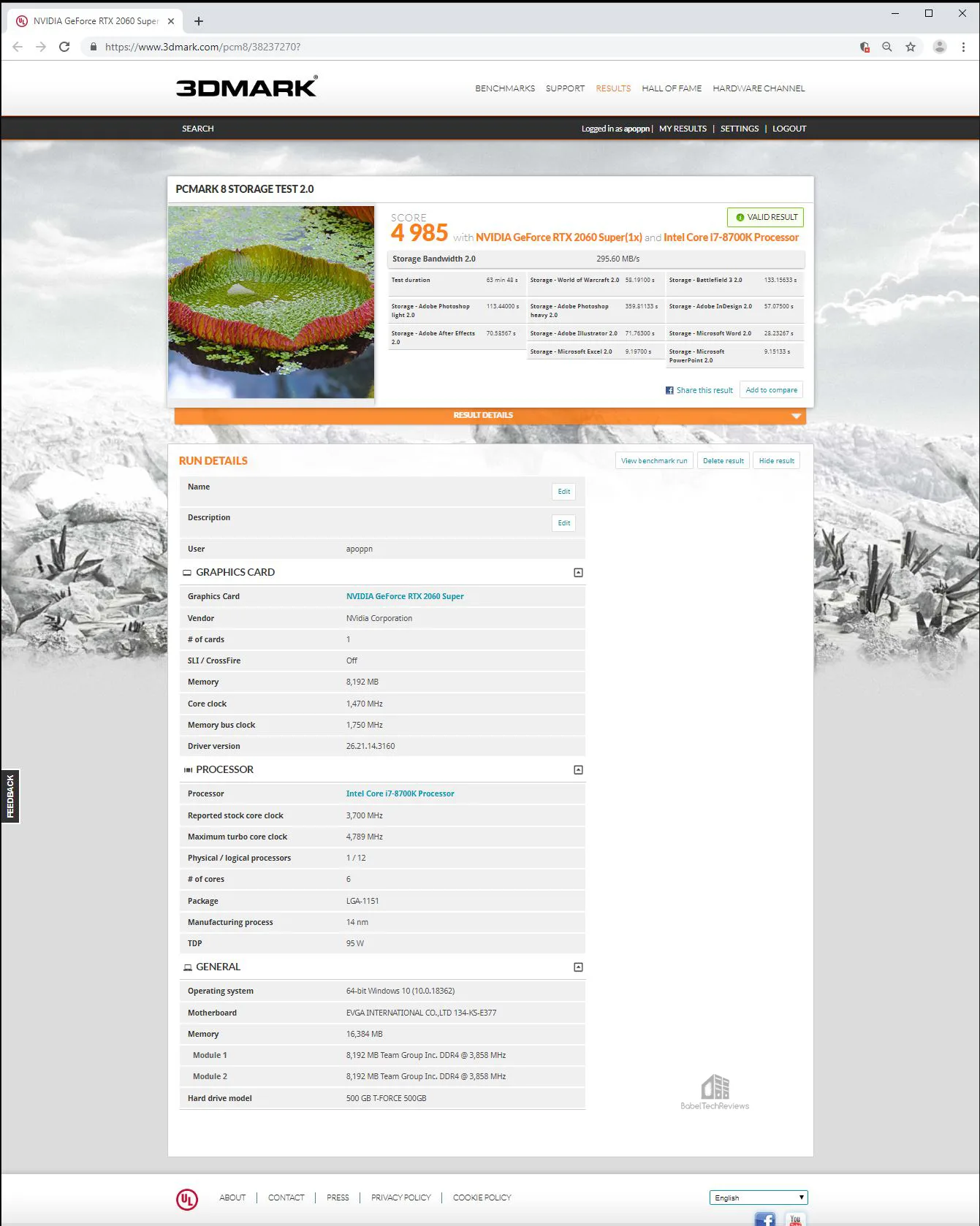
The Team Group L5 480 GB SSD scores 4959 with a total Storage 2.0 Bandwidth of 253.36 MB/s. Most importantly for a gamer, it took 58.6 seconds to load World of Warcraft and 133.8 seconds for Battlefield 3 to load.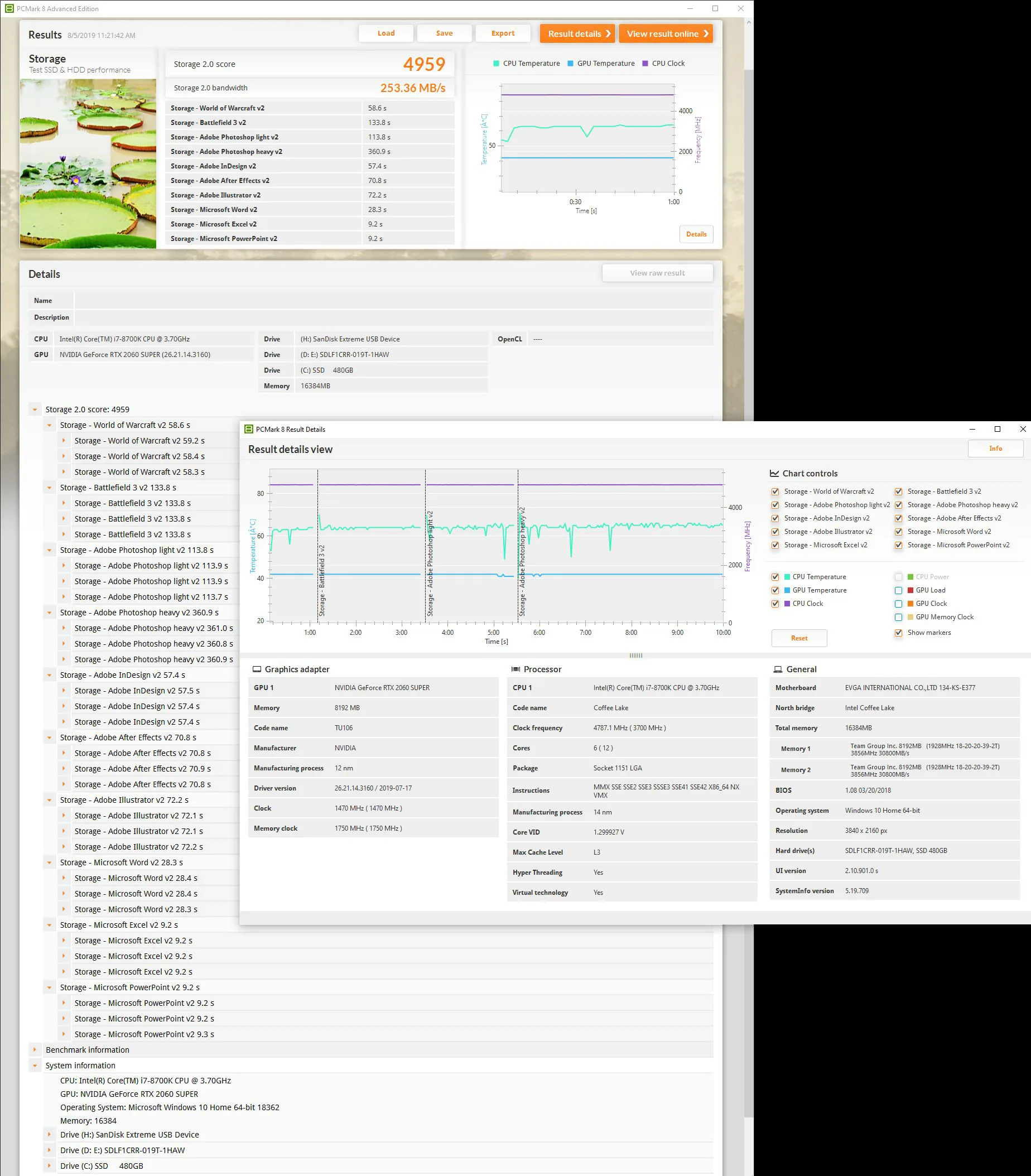
Here are the 2 TB SSHD storage test results scoring 3267 and 21.73 MB/s bandwidth and most importantly for a gamer, it took 97.1 seconds to load World of Warcraft and 250.3 seconds for Battlefield 3 to load.
Here are the SSHD’s online results. Here is the PCMark 8 comparative loading times chart for World of Warcraft and for Battlefield 3 which is also included in the Summary.
Here is the PCMark 8 comparative loading times chart for World of Warcraft and for Battlefield 3 which is also included in the Summary.
Here are the comparative overall PCMark 8 scores including storage bandwidth results.
The Kingston PCIe A1000 M.2 480GB SSD is the fastest drive overall, however, there isn’t a lot of practical difference between its results and any SATA – or even external USB 3.1 Gen 1 SSD game loading speeds. In contrast to using any SSD, the SSHD takes nearly twice as long to load the tested two games. A SSHD only takes advantage of repeated loading of levels or games, and after 2 or 3 loads, then it will set up more quickly, approaching SSD speeds.
SiSoft Sandra 20/20
Before we get to gaming, we want to see exactly where drive performance results differ, and there is no better tool than SiSoft’s Sandra 2020. SiSoftware Sandra (the System ANalyser, Diagnostic and Reporting Assistant) is an complete information & diagnostic utility in one complete package. It is able to provide all the information about your hardware, software and other devices for diagnosis and for benchmarking. In addition, Sandra is derived from a Greek name that implies “defender” or “helper” – PC’s Wonder Woman of benchmarking.
There are several versions of Sandra 2020, including a free version of Sandra Lite that anyone can download and use. It is highly recommended! SiSoft’s Sandra 2020 SP1 is the very latest version (although we are still using the August version), and we are using the full engineer suite courtesy of SiSoft. It will benchmark and analyze all of the important PC subsystems and even rank your PC as well as make recommendations for improvements.
Here are the Sandra disk benchmarking tests in a single chart summarizing the performance results of our four drives
 The Kingston A1000 480 GB NVMe SSD overall performance is faster than the other three SATA III SSDs although the DELTA MAX SSD comes in ahead of the Team Group L5 LTE SSD but just behind the Vulkan SSD. The SSHD sits way behind SSDs in every metric tested.
The Kingston A1000 480 GB NVMe SSD overall performance is faster than the other three SATA III SSDs although the DELTA MAX SSD comes in ahead of the Team Group L5 LTE SSD but just behind the Vulkan SSD. The SSHD sits way behind SSDs in every metric tested.
AIDA64 v6.0
AIDA64 is the successor to Everest and it is an important industry tool for benchmarkers. AIDA64’s benchmark code methods are written in Assembly language, and they are extremely optimized for every popular AMD, Intel and VIA processor core variants by utilizing the appropriate instruction set extensions. We use the Engineer’s version of AIDA64 courtesy of FinalWire. AIDA64 is free to to try and use for 30 days.
We run the AIDA64 Disk Benchmark and the 4 individual READ tests for each drive, and we include the image for each test and then summarize them in a chart. These tests are incredibly detailed and there are a lot of customization options available so we run the default tests. We did not run the Read tests as they destroy all of the data on the disks being tested.
- The Linear Read test measure the sequential performance by reading or writing all sectors without skipping any. It’s a linear view of the drives overall performance from its beginning to end.
- The Random Read test measures the random performance by reading variable-sized data blocks at random locations on the surface of the drive and they are combination of both speed and access times as its position changes before each new operation.
- The Access time tests are designed to measure the data access performance by reading 0.5 KB data blocks at random drive locations.
- The Buffered Read test will measure the drive caching.
The overall disk benchmark is relatively quick, but the individual benchmarks take much longer to chart the drive’s performance.
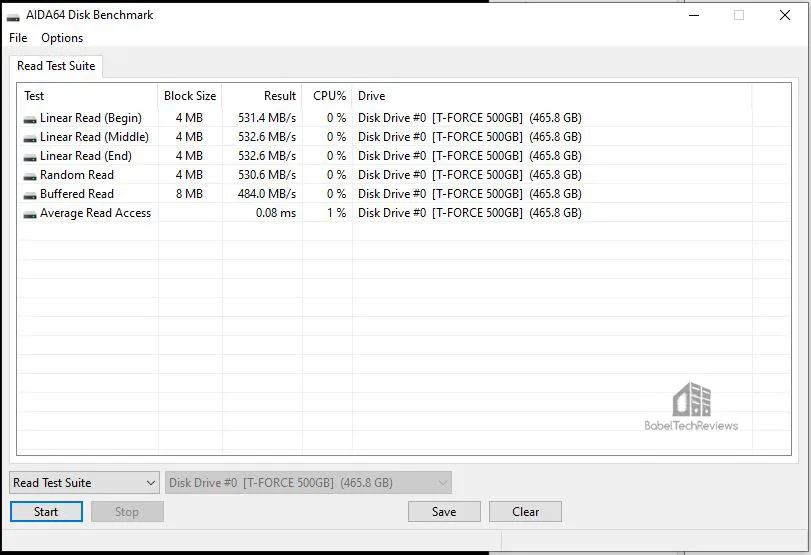 Above are the T-FORCE Delta Max SSD’s overall quick disk benchmark results followed by four images of detailed individualized Read tests.
Above are the T-FORCE Delta Max SSD’s overall quick disk benchmark results followed by four images of detailed individualized Read tests.
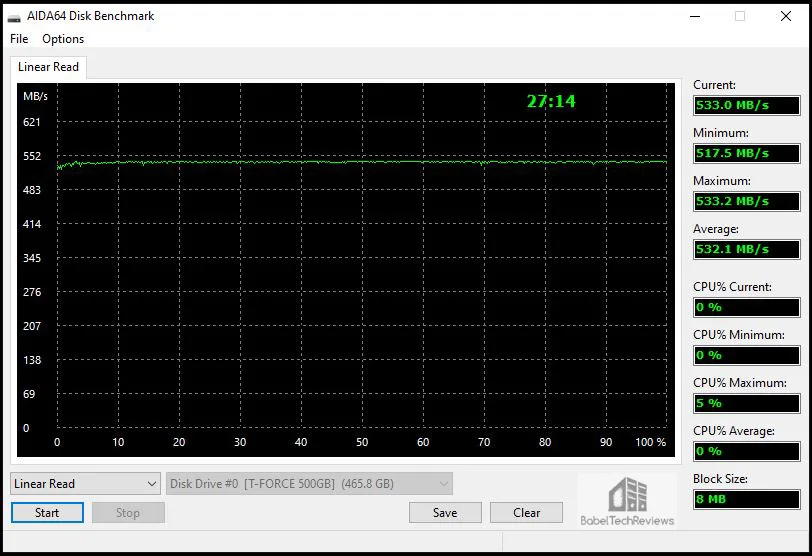
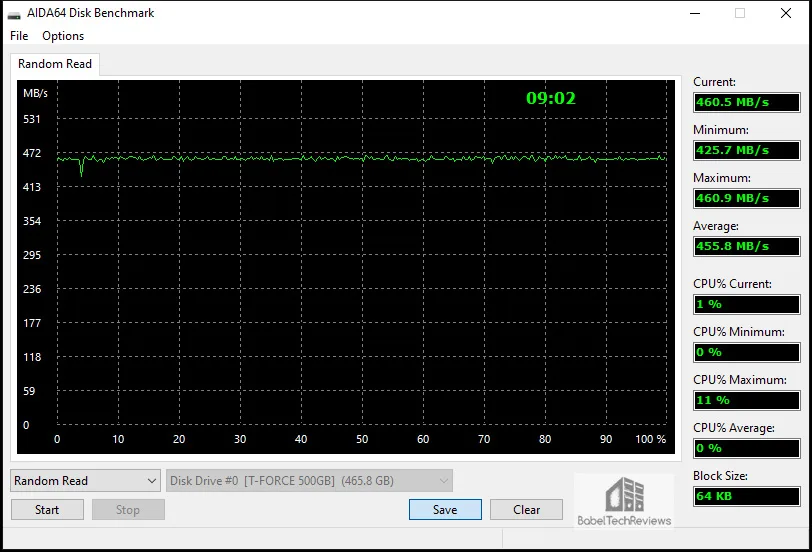
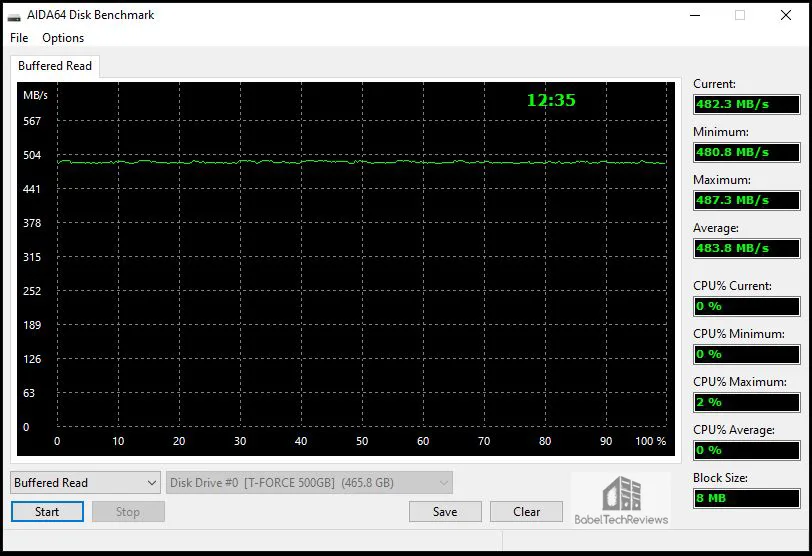
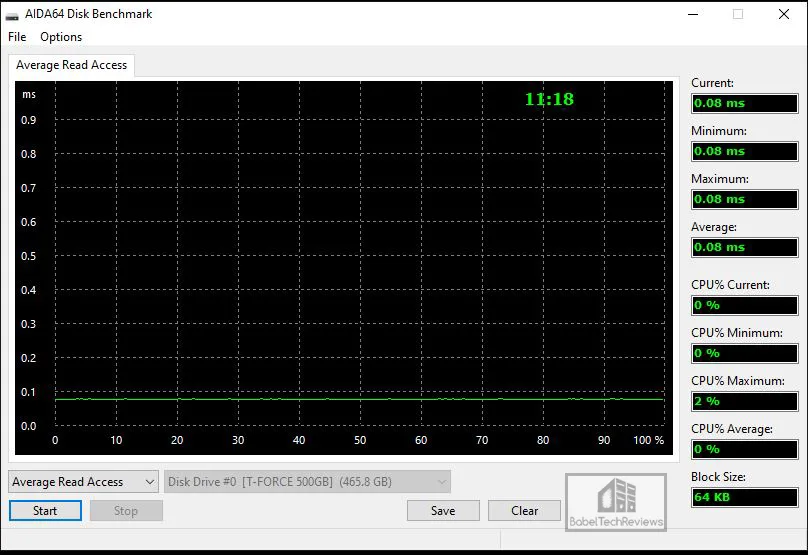
Here is the summary chart comparing our six tested drives:
Again the Kingston A1000 480GB NVMe SSD is ahead of the other SATA-based SSDs where the DELTA MAX sits in the middle. The SATA SSDs are in turn faster than the USB 3.0 external PD400 which in turn is much faster than the SSHD.
CrystalDiskMark 6.0.0
CrystalDiskMark is a HDD benchmark utility for your hard drive that enables you to measure sequential and random read/write speeds. Here are some key features of “CrystalDiskMark”:
- Measure sequential reads/writes speed
- Measure random 512KB, 4KB, 4KB (Queue Depth=32) reads/writes speed
Here are the T-FORCE Delta Max SSD‘s results:
As expected, the PCIe M.2 Kingston A1000 SSD scores highest followed by the three SATA SSDs with very similar performance results, then the Team Group USB 3.1 PD400, and in distant last place, the FireCuda 2TB SSHD. 
Let’s look at our next synthetic test, HD Tune. This free standalone synthetic test we use is old and it doesn’t represent real world performance but it does test some important drive metrics and it is still used today. There is also a pay-for HD Tune Pro which is up-to-date and offers more functionality.
HD Tune
HD Tune is a hard disk utility which has the following functions and it measures the performance of:
- Transfer Rate
- Access Time
- CPU Usage
- Burst Rate
- Random Access test
- Write benchmark
Hard Disk information includes partition information, supported features, firmware version, serial number, disk capacity, buffer size, transfer mode.
- Hard Disk Health
- S.M.A.R.T. Information (Self-Monitoring Analysis and Reporting Technology)
- Power On Time
- Error scan
- Temperature display
Here is the T-FORCE Delta Max 500GB SSD HD Tune benchmark.
Here are the HD Tune benches summarized in a chart of our six tested drives
The Kingston A1000 PCIe NVMe SSD again leads our tested drives followed by the SATA SSDs, the PD400, and again as the slowest is the SSHD.
Next we benchmark using AS SSD.
AS SSD
AS SSD is especially designed for Solid State Drives (SSD). This tool contains synthetic and practice tests. The synthetic tests determine the sequential and random read and write performance of the SSD without use of the operating system caches. In Seq-test the program measures how long it takes to read and write a 1 GB file.
In the 4K test, read and write performance for random 4K blocks are determined. The 4K-64-thrd test are similar to the 4K procedure except that the read and write operations on 64 threads are distributed as in the usual start of a program. In the copying test, two large ISO file folders are created, programs with many small files, and a games folder with small and large files. These three folders are copied by the OS copy command with the cache turned on. AS SSD gives an overall “score” after it runs the benchmarks.
Here is the T-FORCE Delta Max 500GB SSD AS SSD benchmark results.
The SSHD or HDD tests appear to take forever with AS SSD and they score very low compared to any SATA SSD and the PCIe SSD score as much faster. The Vulkan is faster than the DELTA MAX which is in turn faster than the L5 LTE SSD. The USB 3.1 PD400 is the slowest of our five tested SSDs but it is still much faster than any SSHD.
ATTO
ATTO is a low level hardware benchmark for random access read/write storage devices including for SSDs and HDDs. HD Tach uses custom device drivers and low level Windows interfaces to determine the physical performance of the device.
Here is the T-FORCE Delta Max 500GB SSD ATTO benchmark.
Here is the T-FORCE Vulcan 500GB SSD ATTO disk benchmark results.
Here are the Team Group 480GB L5 SSD‘s ATTO disk benchmark results.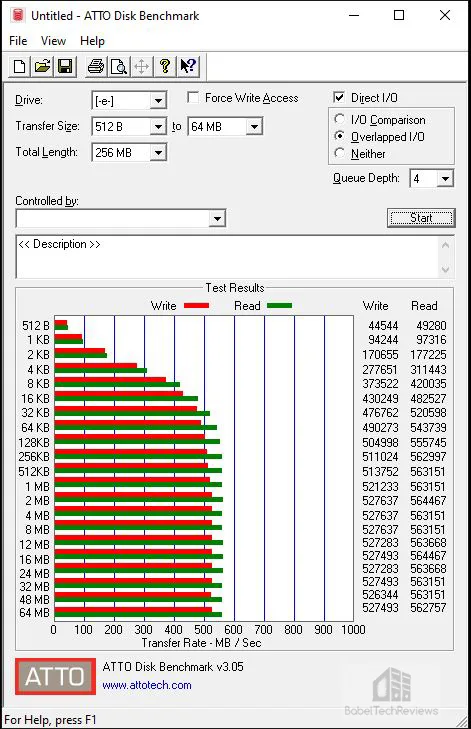
The Kingston A1000 480 GB SSD ATTO Disk benchmark results are next.
Here is the ATTO Team Group PD400 240GB SSD results:
The FireCuda 2 TB SSHD’s ATTO benchmark results are up last.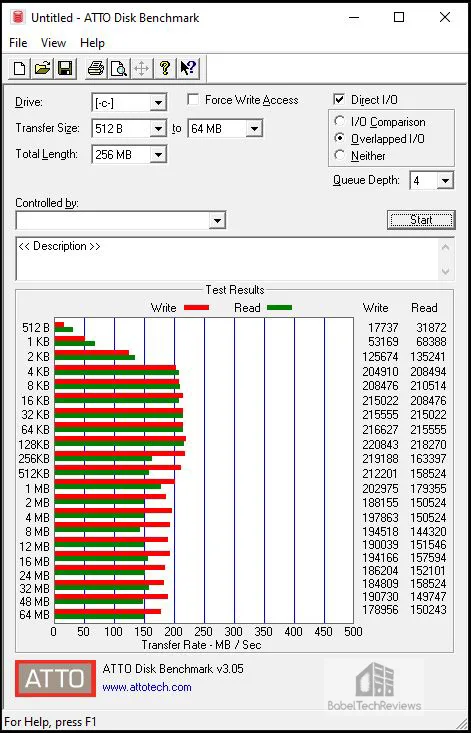
HD Tach again shows the Kingston A1000 NVMe SSD ahead of the other SATA III SSDs with the T-FORCE Vulcan 500GB SSD in second place followed by the DELTA MAX and then the LTE SSD followed more distantly by the external PD400 and then the SSHD which trails in every test.
HD Tach
HD Tach is a low level hardware benchmark for random access read/write storage devices including for SSDs and HDDs. HD Tach uses custom device drivers and low level Windows interfaces to determine the physical performance of the device. It is no longer supported and needs to be run in compatibility mode for Windows 7.
Here is the T-FORCE Delta Max 500GB SSD HDTach benchmark results with an average read of 481.3 MB/sec.
Here are the HD Tach Disk benches summarized in a chart comparing our six tested drives.
As usual, the Kingston A1000 NVMe SSD is ahead of the other SATA III SSDs; the T-FORCE Vulcan 500GB SSD is slightly faster than the DELTA MAX which is faster than the Team Group L5 LTE 480GB SSD which in turn is quicker than the PD400. The SSHD sits in last place.
Let’s look at game and game level loading times next.
The Game/Level Loading Time Results
Game and game level loading time results are very difficult to measure precisely which is why we give the results again from PCMark 8. It is easy to see that generally SSDs perform similarly with regard to game loading times and they are miles ahead of any HDD. Even SSHDs require loading the same level or program over-and-over to get quicker.
The NVMe Kingston A1000 PCIe SSD is faster than the other three SATA-based drives which offer similar performance, but all SSDs are faster than launching the game from a SSHD for the first time. It is somewhat surprising that the external PD400 USB 3.1 Gen 1 drive roughly matches the loading times for the NVMe and SATA III SSDs.
Until developers start to target SSDs for game storage, or perhaps after consoles move completely away from hard disk drives, we will finally no longer see SSDs held back from achieving the game loading performance they are capable of. NVMe PCIe M.2 SSDs are a bit faster than SATA-based SSDs just as external USB 3.1 SSDs are generally a bit slower.
Here are all our other Summary Charts in one place for easy reference.
Non-Gaming Summary Charts





 In all cases, the Team Group PD400 external USB 3.1 drive is faster than the SSHD although it is the slowest of our five tested SSDs. All of the SATA drives perform very close to each other with the Vulkan being the fastest followed by the DELTA MAX and then the Team Group LTE SSD.
In all cases, the Team Group PD400 external USB 3.1 drive is faster than the SSHD although it is the slowest of our five tested SSDs. All of the SATA drives perform very close to each other with the Vulkan being the fastest followed by the DELTA MAX and then the Team Group LTE SSD.
The Kingston A1000 480GB PCIe M.2 SSD is the most expensive as well as the fastest SSD that we tested. Those who desire having the fastest PCs, will want a PCIe NVMe SSD for gaming while those who want RGB will probably pick a SATA SSD (or both). At the very least, we would recommend moving from a HDD or a SSHD to any SSD including to an inexpensive USB 3.1-based SSD. In this case, the T-FORCE DELTA MAX is a reasonably fast SATA SSD with its price premium coming from being a completely unique RGB showpiece.
Let’s head for our conclusion.
The Conclusion & Verdict
SSD technology is still improving and again it seems that pricing is still reasonable as SSD manufacturers seek to differentiate their SSDs from each other. The T-FORCE DELTA MAX is a completely unique looking full-screen RGB SSD that commands a premium price by virtue of how it looks. It will appeal to a RGB gamer that wants to make it a visual showpiece for his PC.
It is still not mandatory to have a SSD if you use your PC only for gaming. Games do not perform better on a SSD as developers still target the HDD for optimizing game performance which is why games load and play fine from a USB 3.0/3.1 SSD. Some games may take significantly longer to load from a HDD or SSHD than they do from an external SSD. If a gamer wants to get right back into the game, an external USB 3.1 SSD will improve immersion and decrease frustration.
Windows 10 is becoming more and more painful to use when installed on a mechanical or even a hybrid solid state/hard disk drive. Indexing, Search, or Anti-malware automatic programs may often saturate the bandwidth of a mechanical drive, and even downloading or updating Steam games may slow your PC to an irritating crawl.
Pros
- The DELTA MAX 500GB SSD is unique with a large fully addressable RGB display that interfaces with many motherboard’s RBG software.
- The DELTA MAX 500GB SSD is reasonably fast as a SATA III SSD and sits ahead of the Team Group L5 LTE 480GB SSD and only slightly behind the T-FORCE VULKAN 500GB SSD in performance
- 3-year warranty backed by Team Group support
Cons
-
- Pricing. At $99 the DELTA MAX 500GB is as expensive as a faster NVMe SSD.
This has been quite an enjoyable exploration comparing our other five drives with the Team Group DELTA MAX SSD. It has been added as 500GB of additional storage to BTR’s flagship PC so that now at least 50 PC games and additional VR games are ready to benchmark. It is an additional treat placing the DELTA MAX SSD in the PC as a visual focus rather than retiring it to the back of the PC as is usual with SSDs.
The Verdict
 We are giving the T-FORCE DELTA MAX BTR’s “Editor’s Choice” Award even though the 500GB version is priced the same as a faster PCIe NVMe SSD and it is more expensive than most 500GB SATA SSDs. The DELTA MAX will appeal to a gamer that wants a completely unique look for his SSD with a very large screen that can interface with motherboard lighting software.
We are giving the T-FORCE DELTA MAX BTR’s “Editor’s Choice” Award even though the 500GB version is priced the same as a faster PCIe NVMe SSD and it is more expensive than most 500GB SATA SSDs. The DELTA MAX will appeal to a gamer that wants a completely unique look for his SSD with a very large screen that can interface with motherboard lighting software.
As an awesome looking SSD, the DELTA MAX is a great way to store, launch, and play games while also being able to appreciate its unique visuals. We cannot return to hard disk drives ever again for gaming and would recommend using a HDD or SSHD only for storage.
SSD prices change daily so we suggest checking for sales to get the best bang for buck. We recommend the T-FORCE DELTA MAX SSD as an good-looking and unique choice for a RGB drive with a 3-year warranty backed by Team Group.
Happy Gaming!
